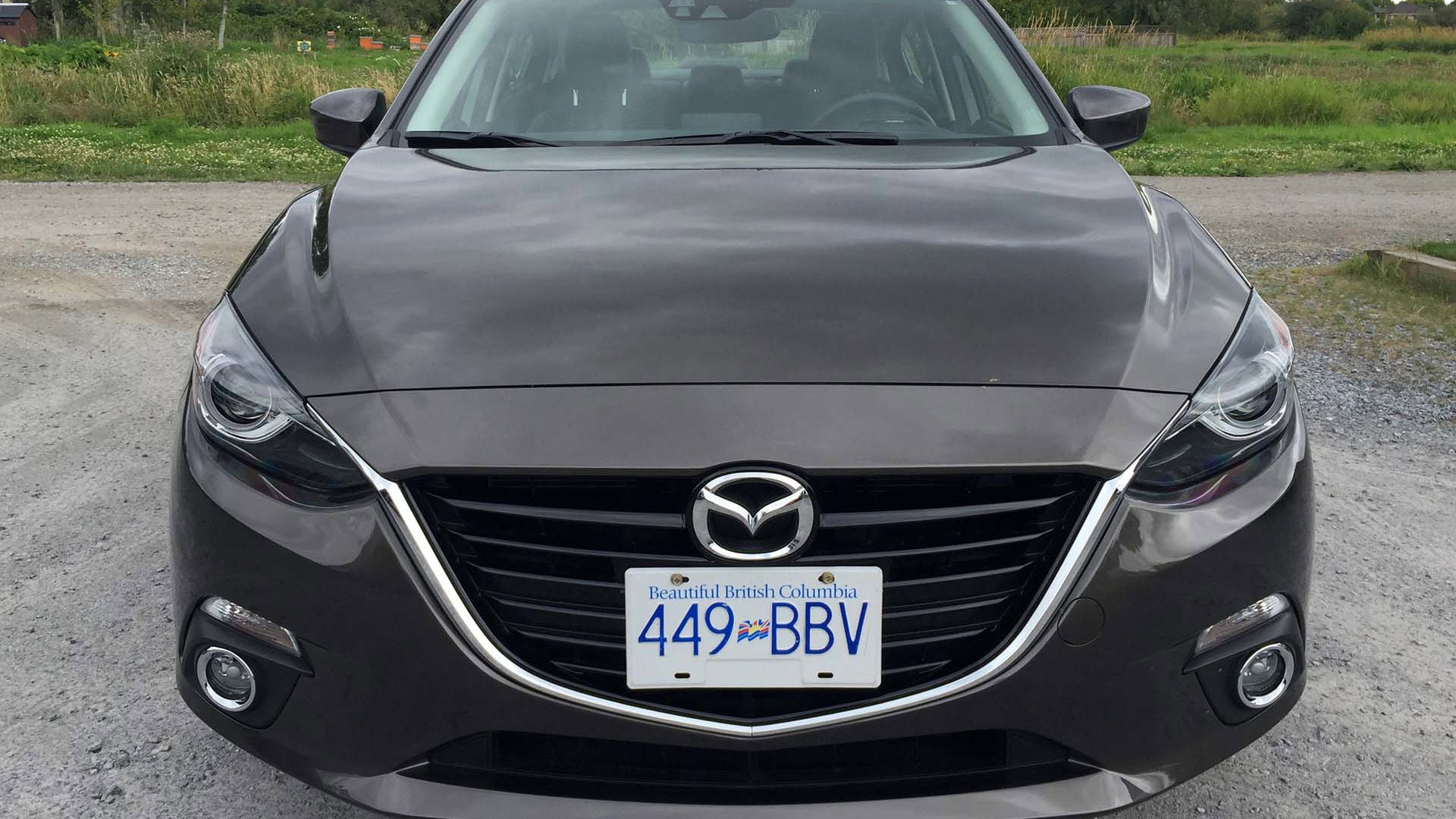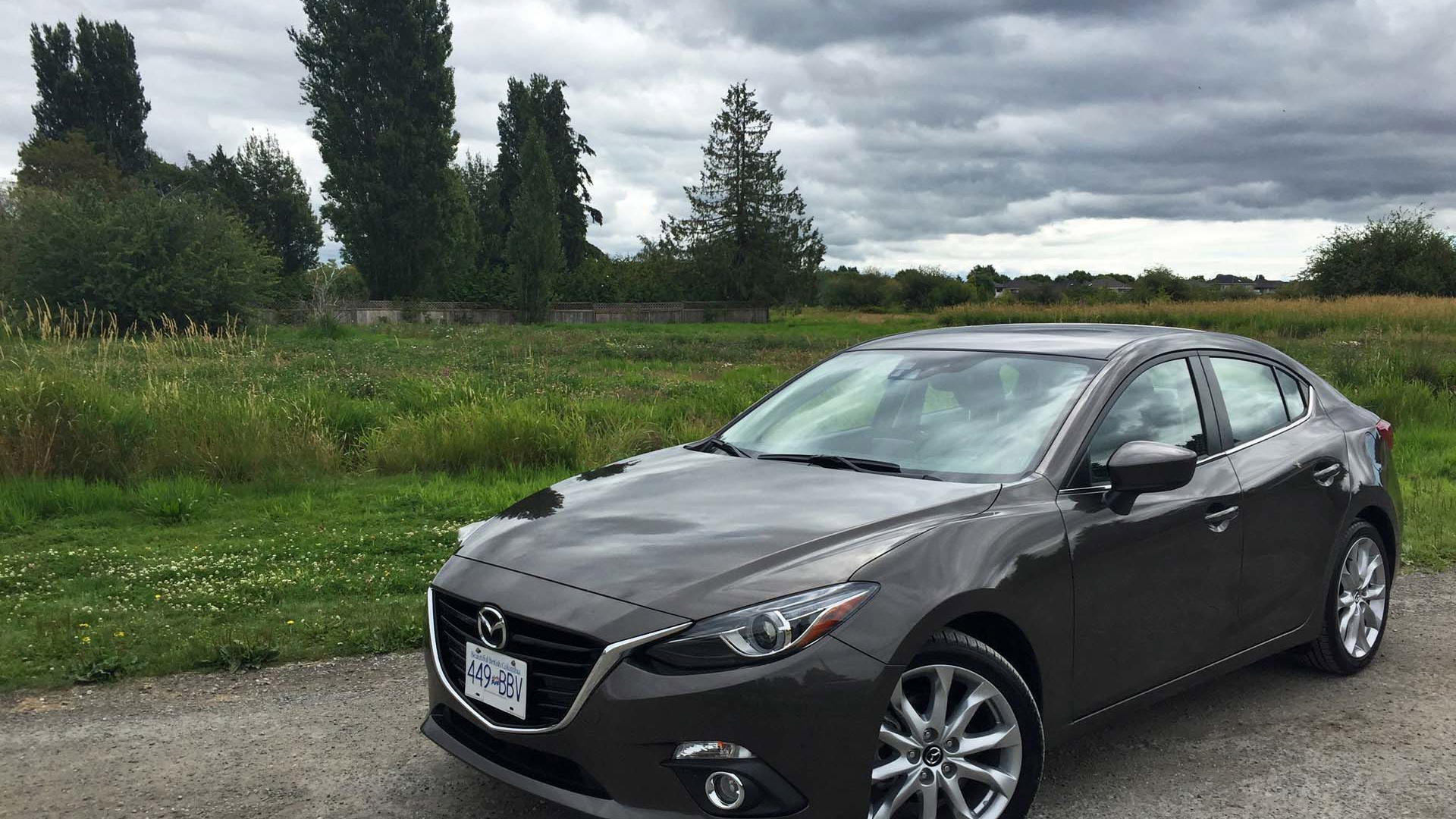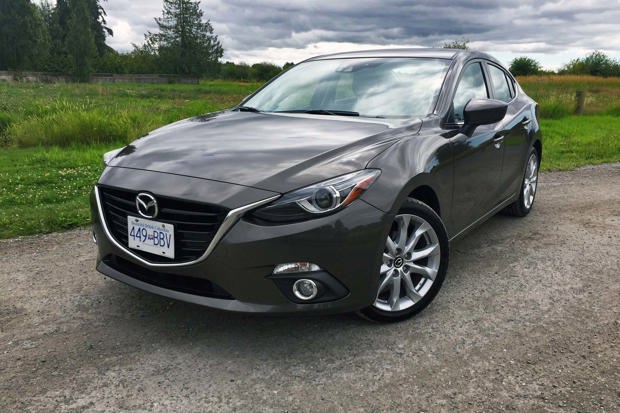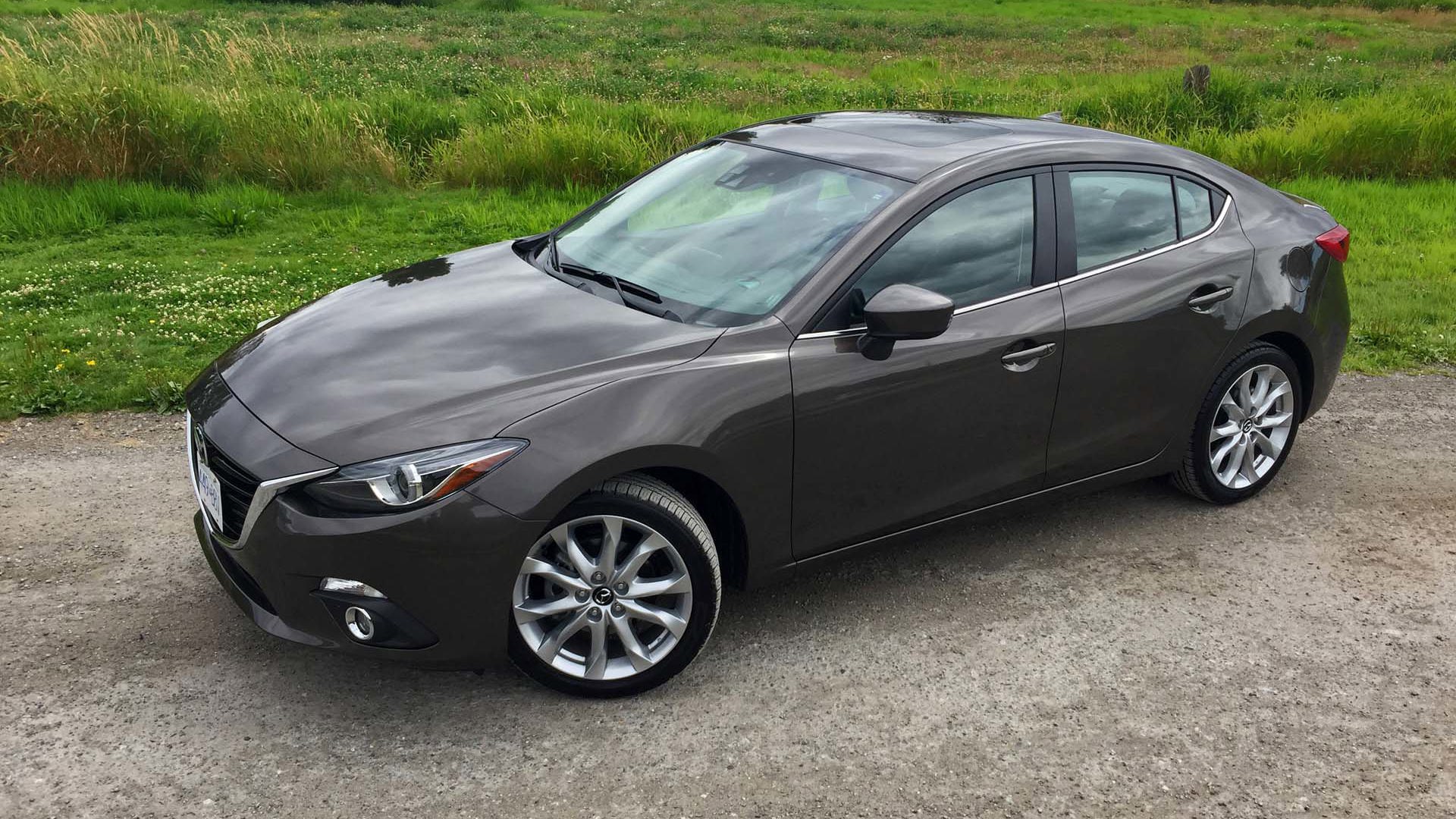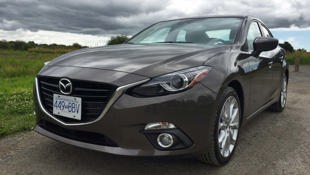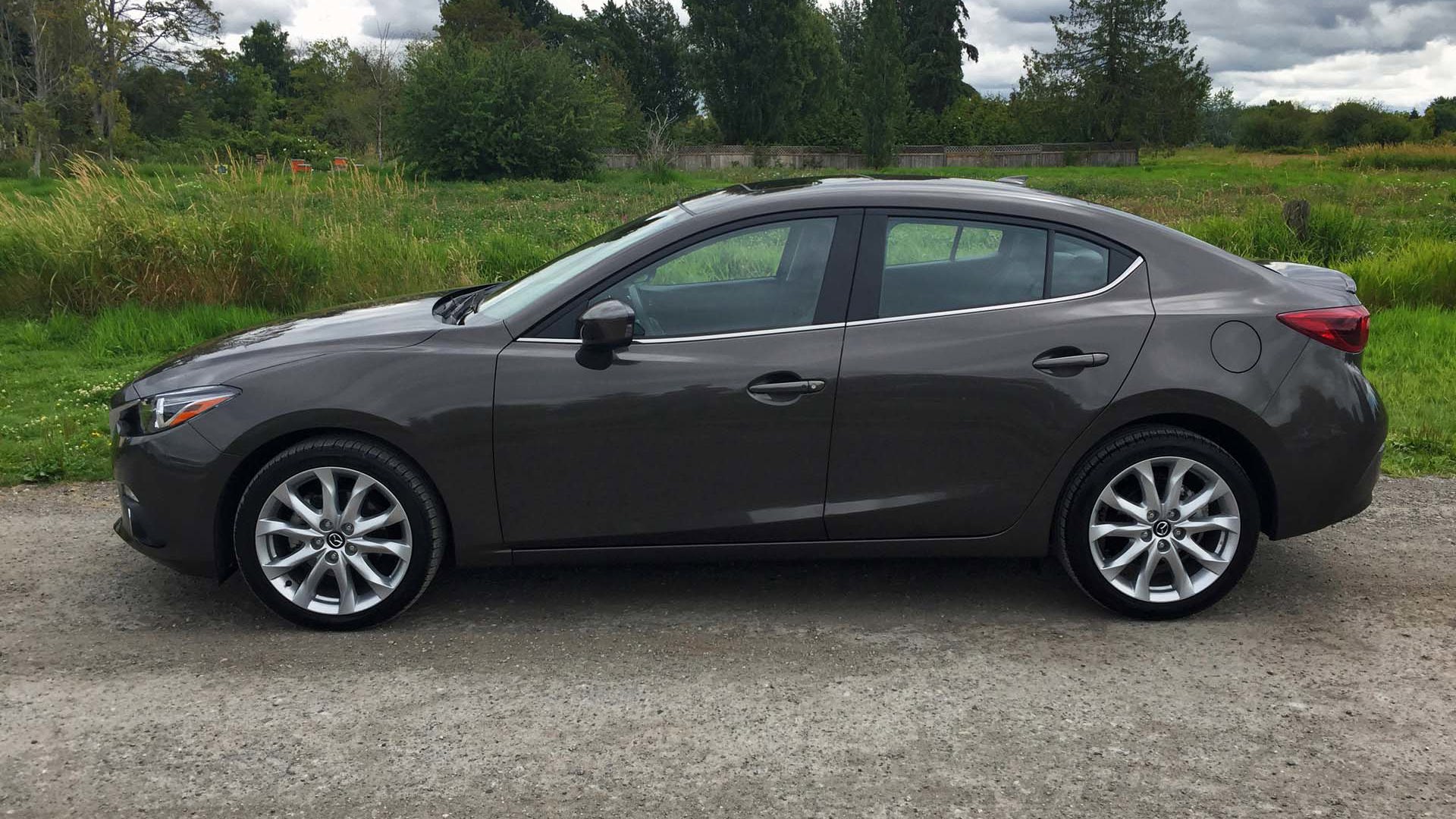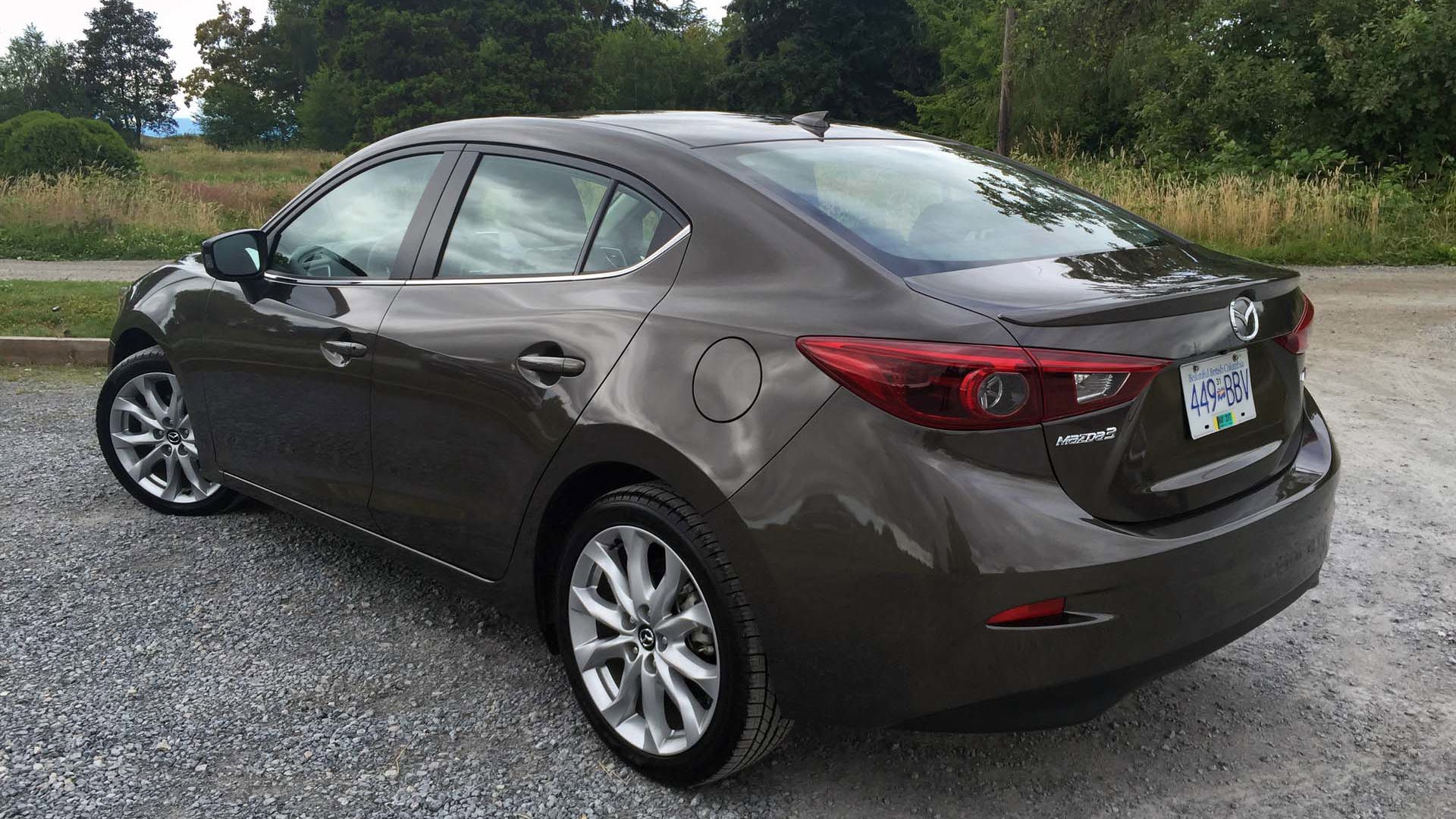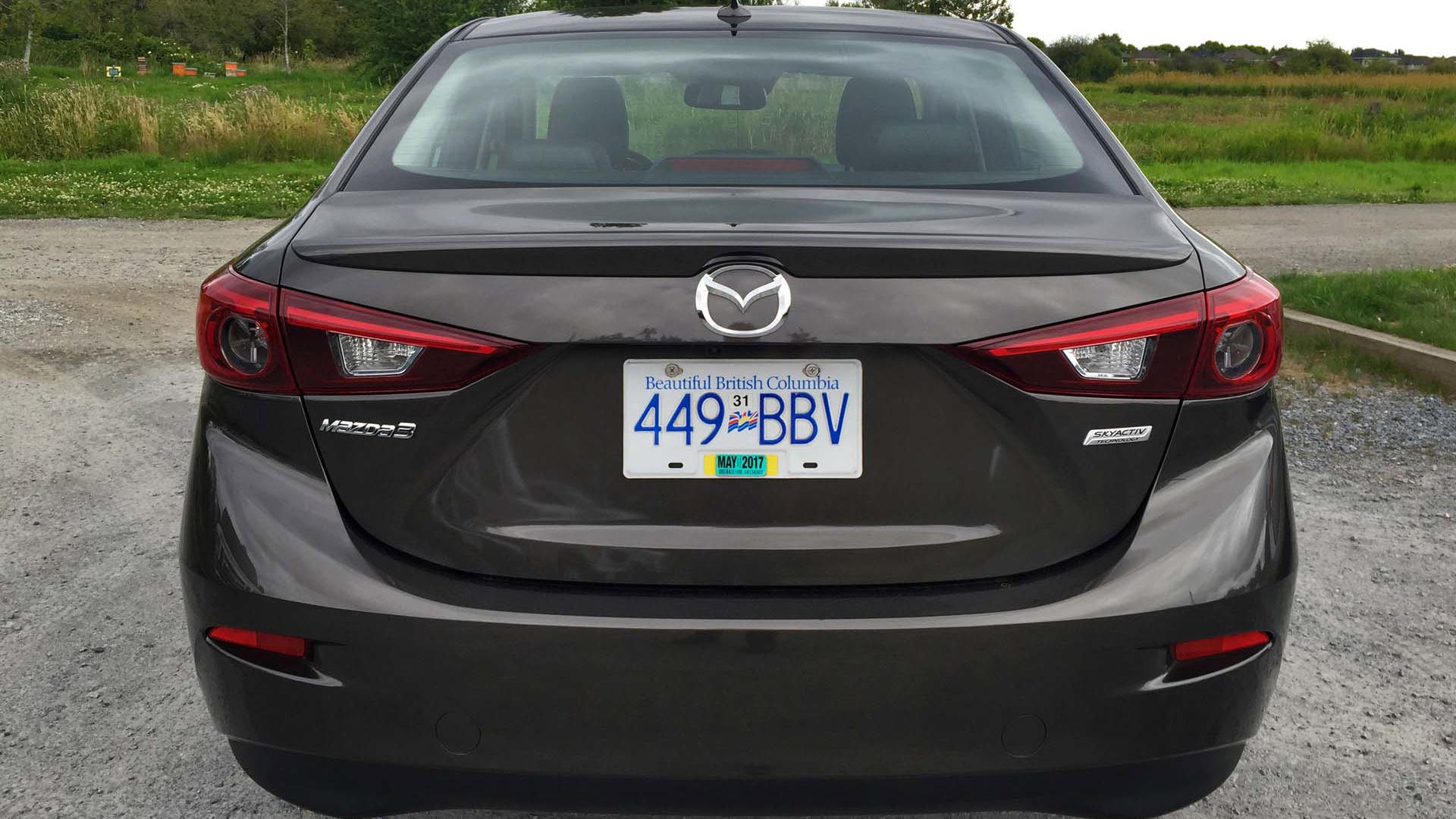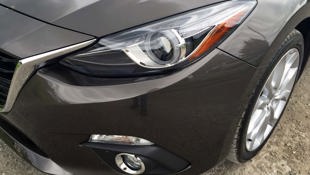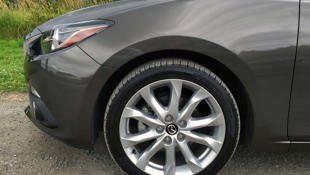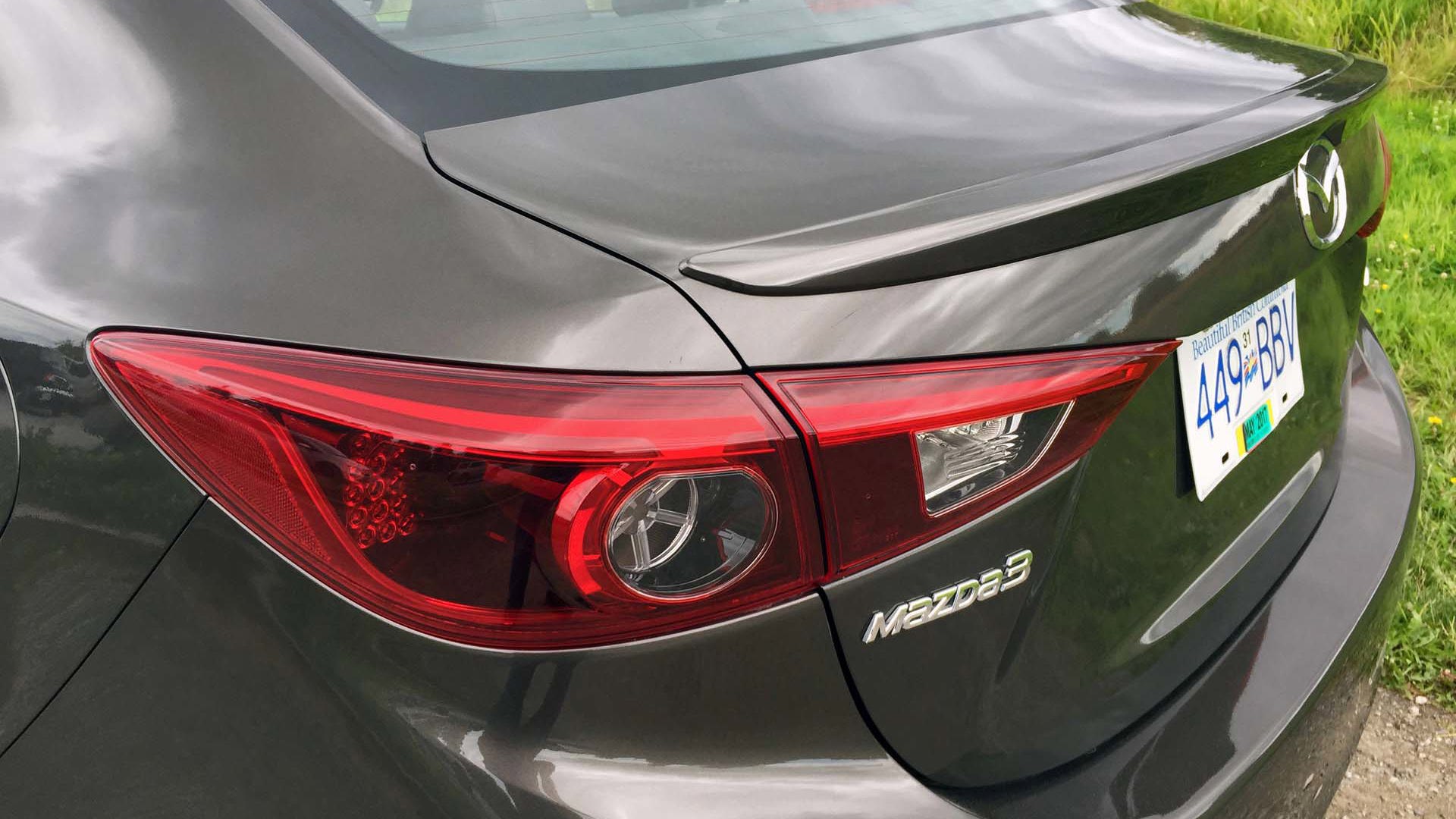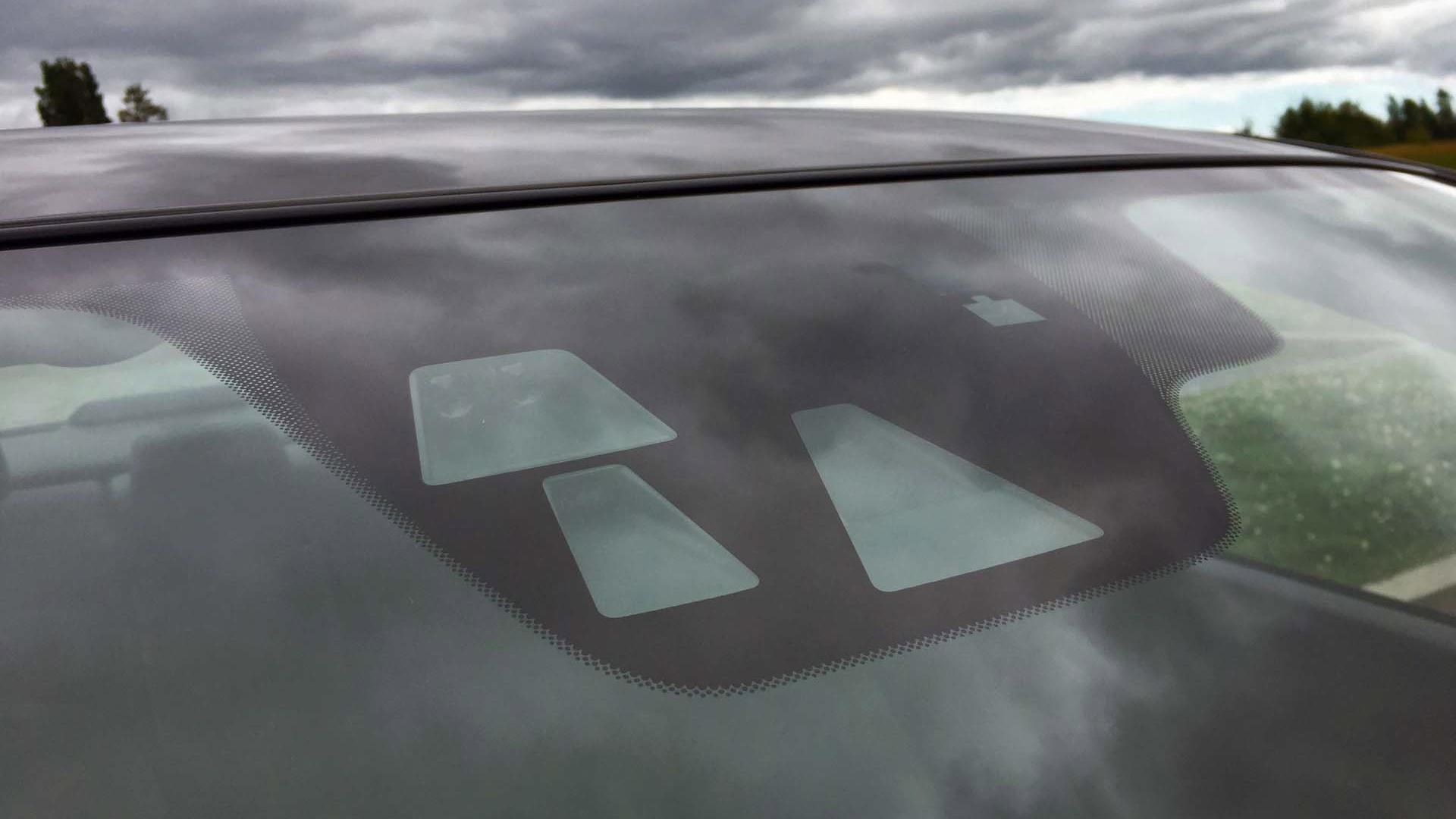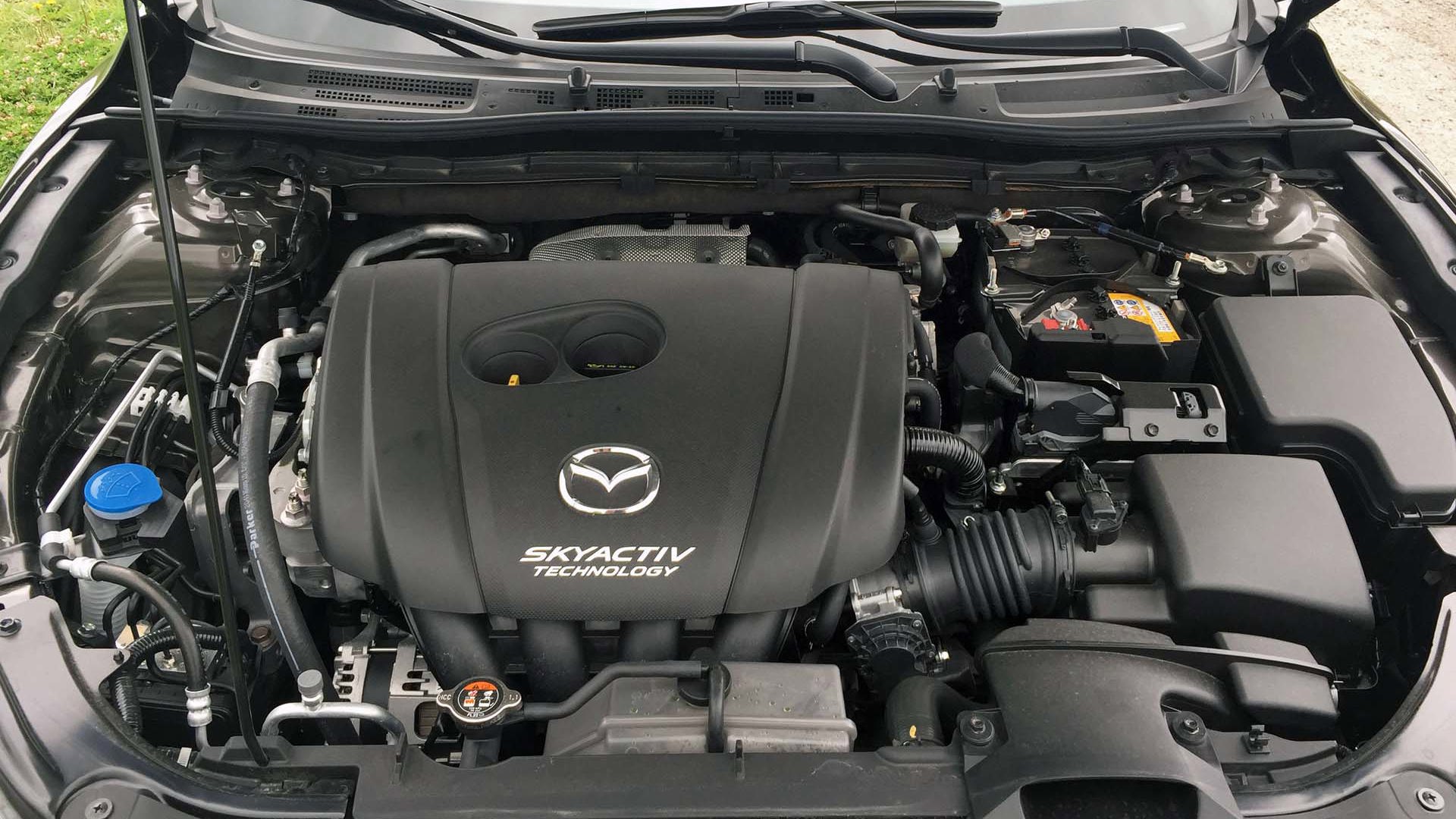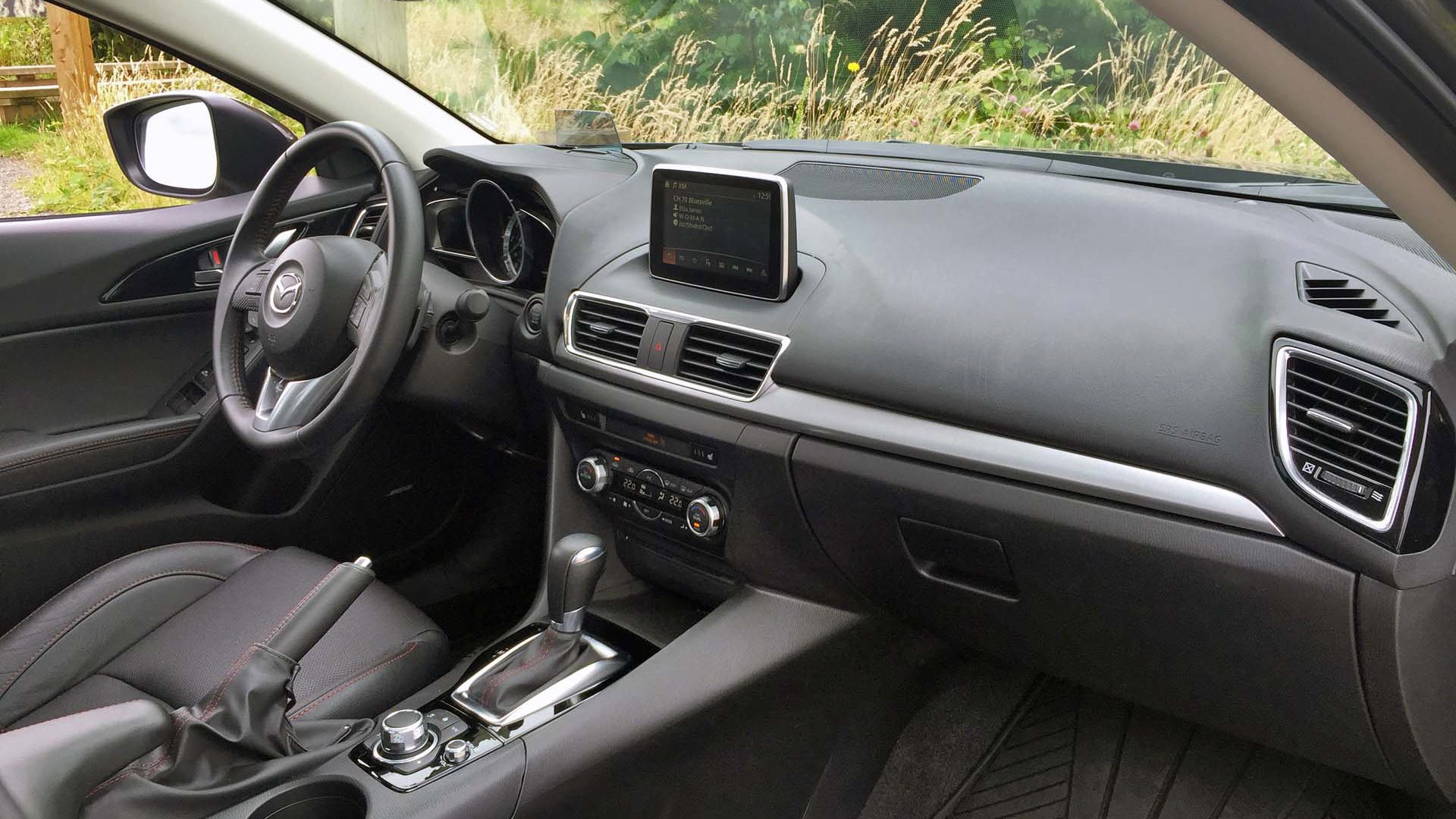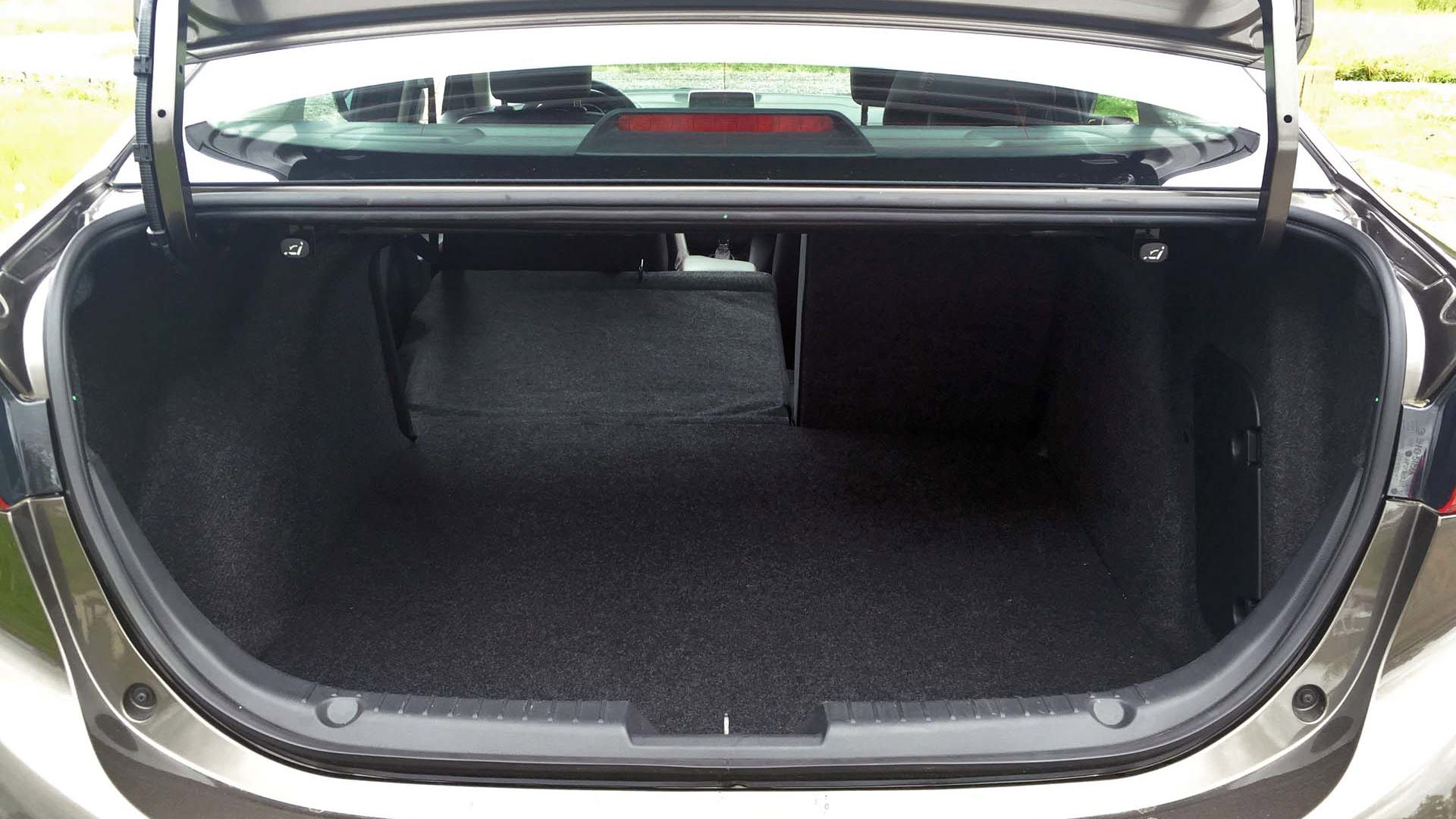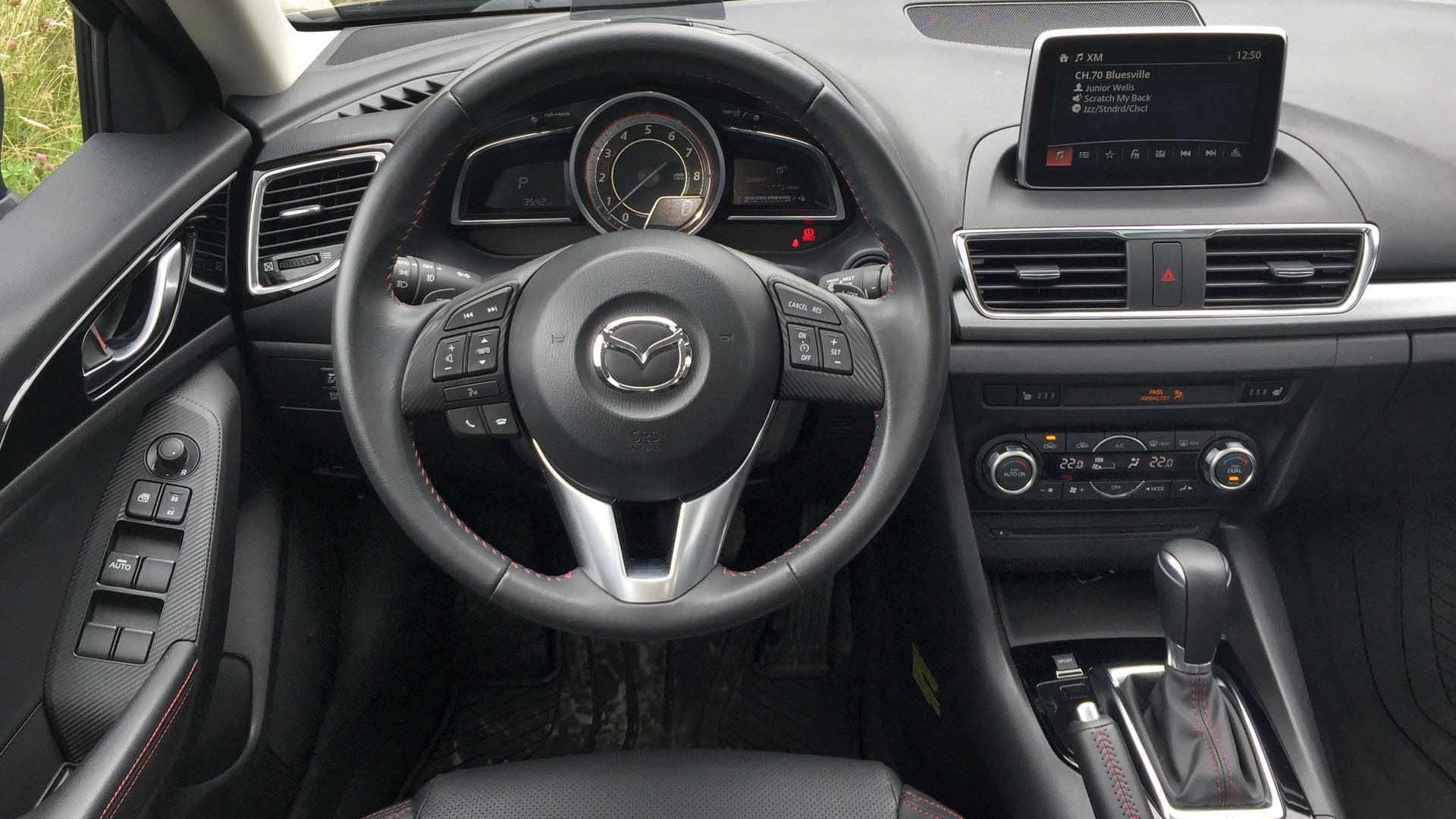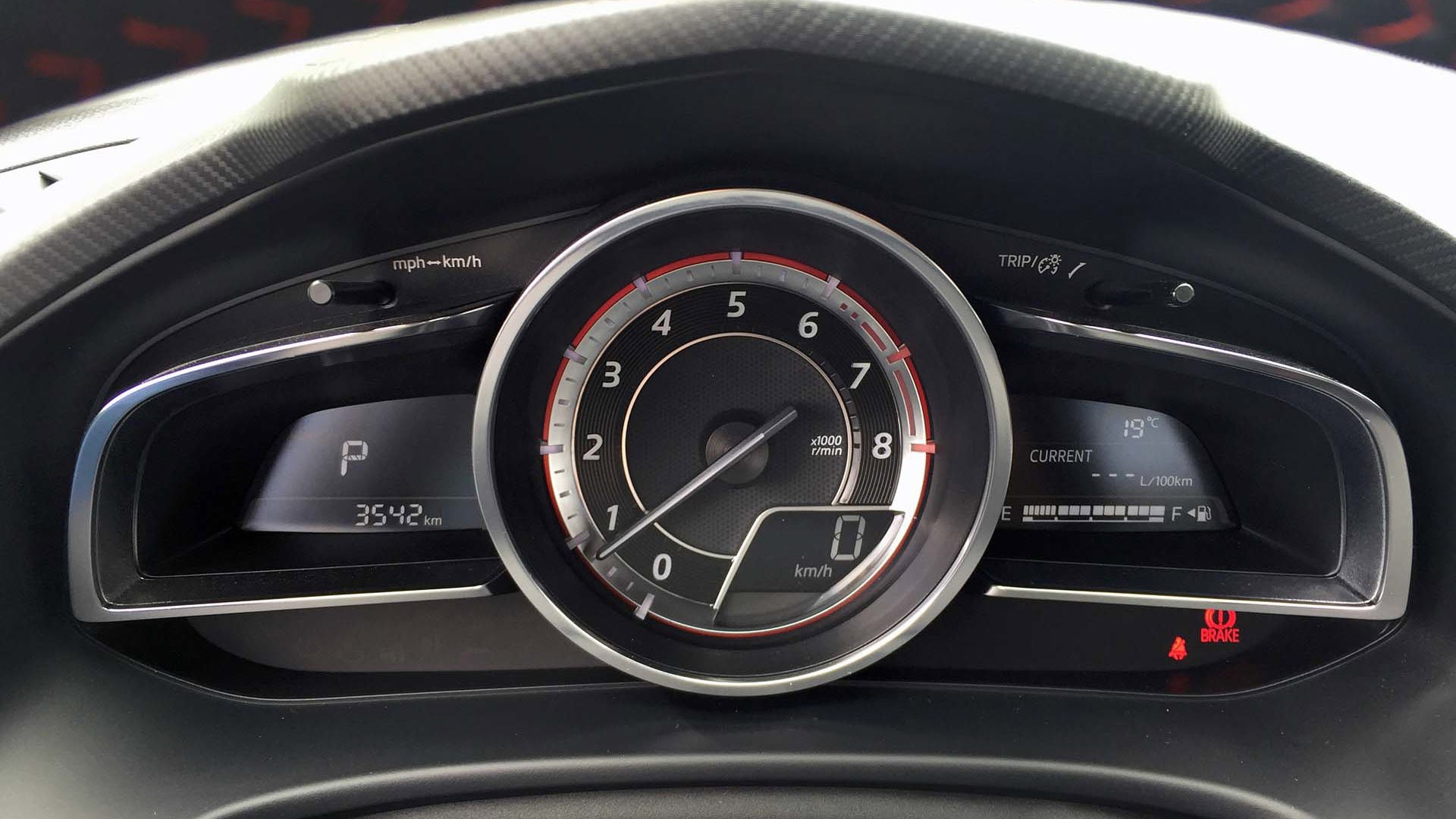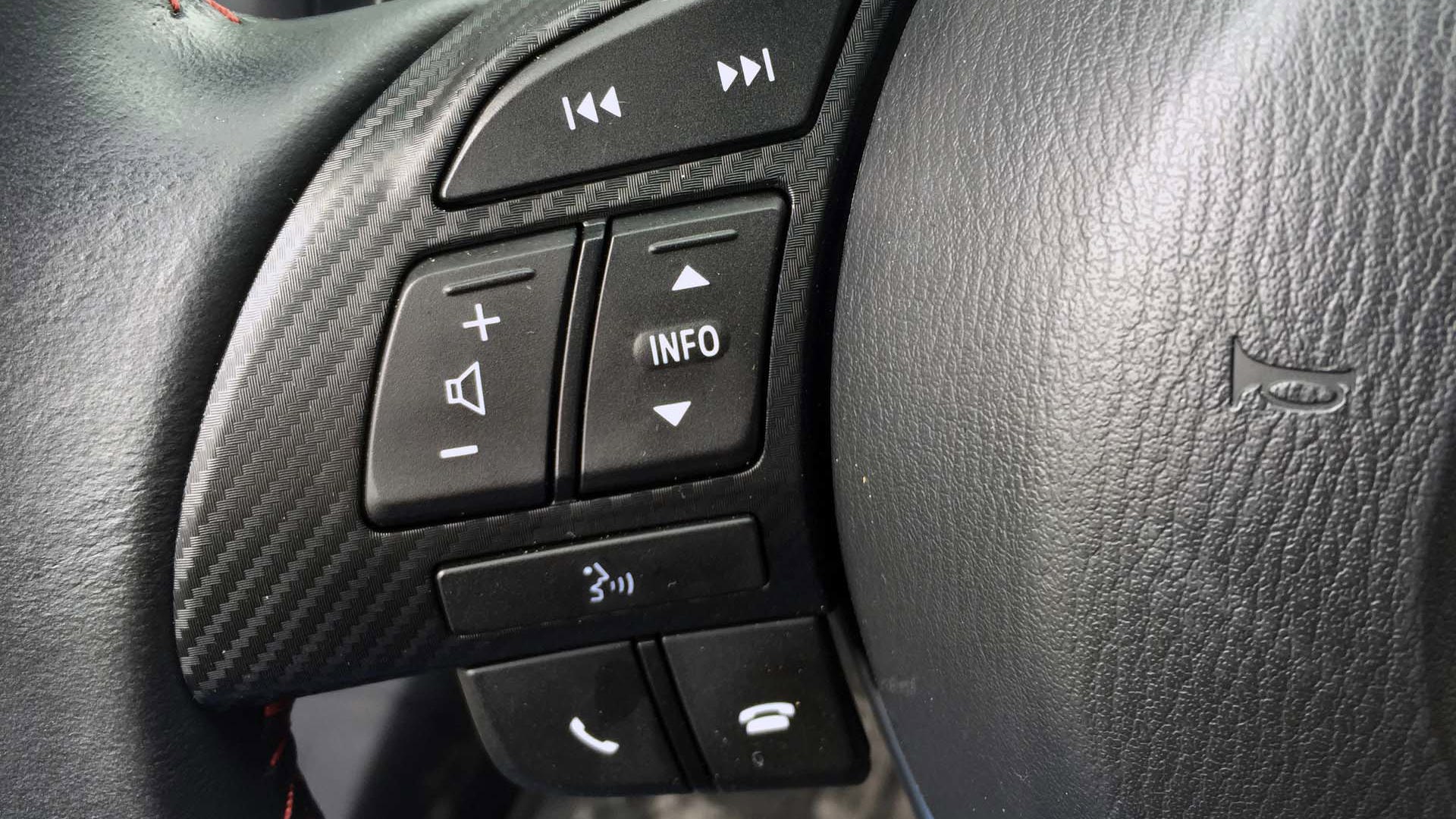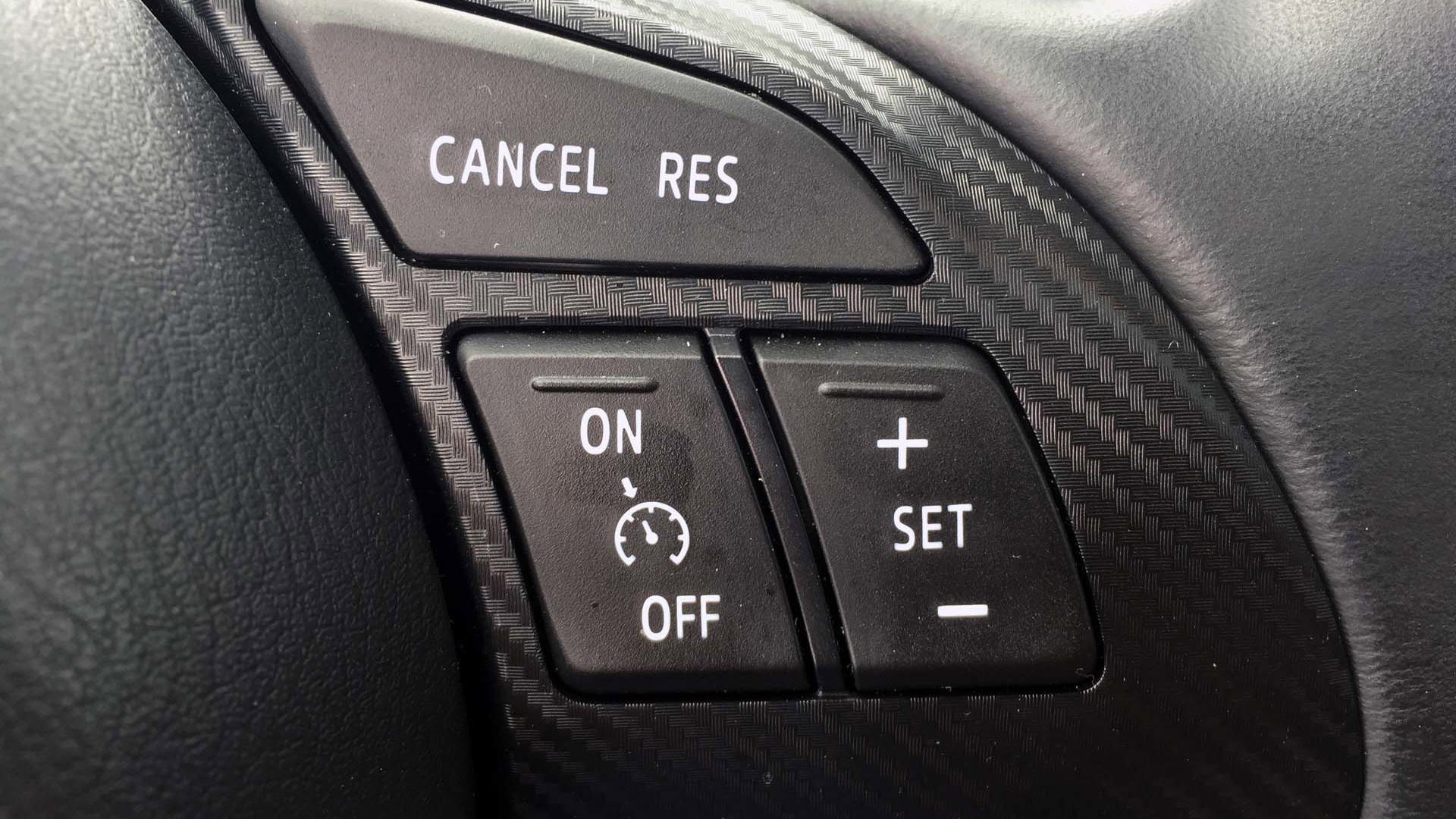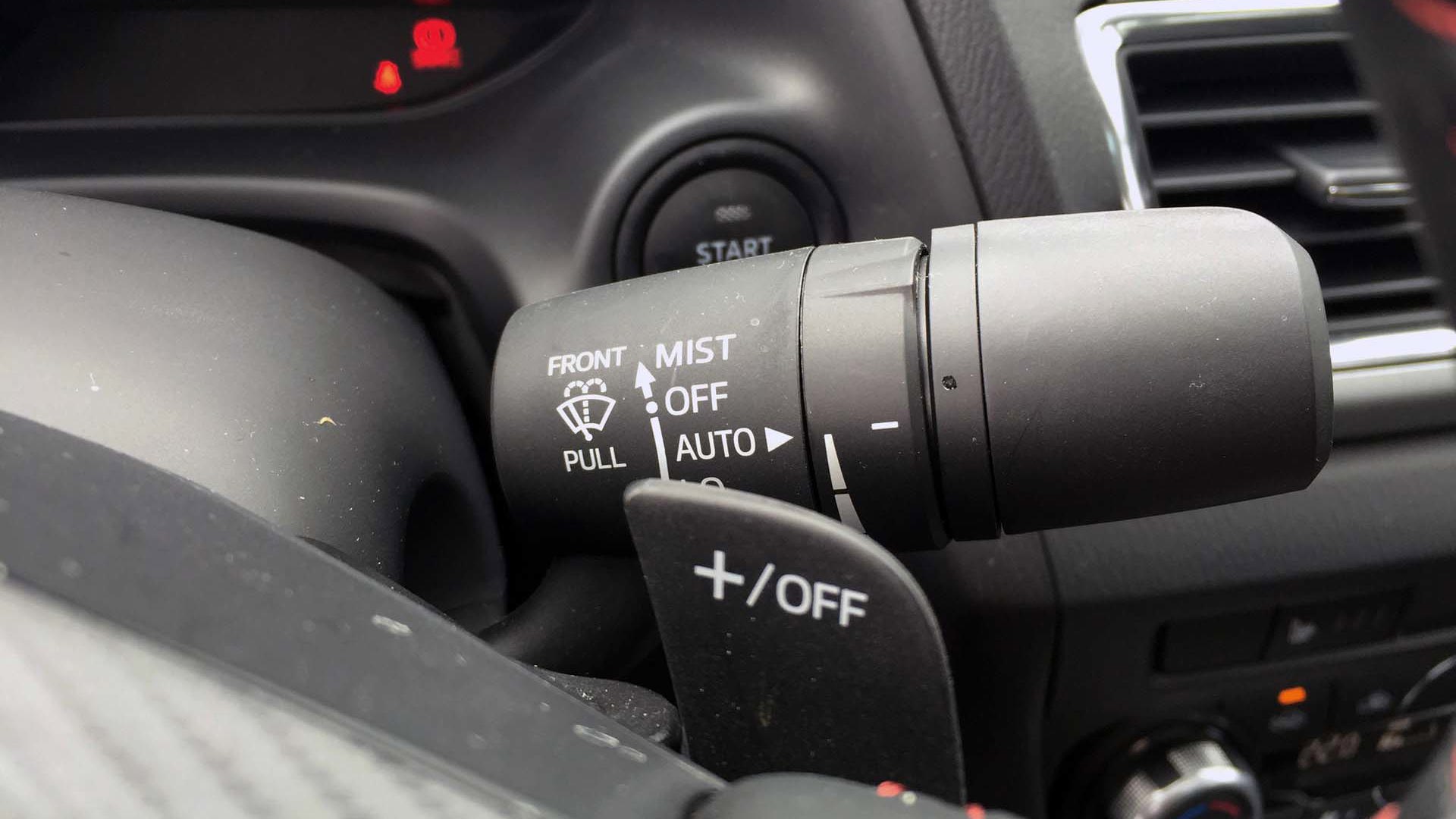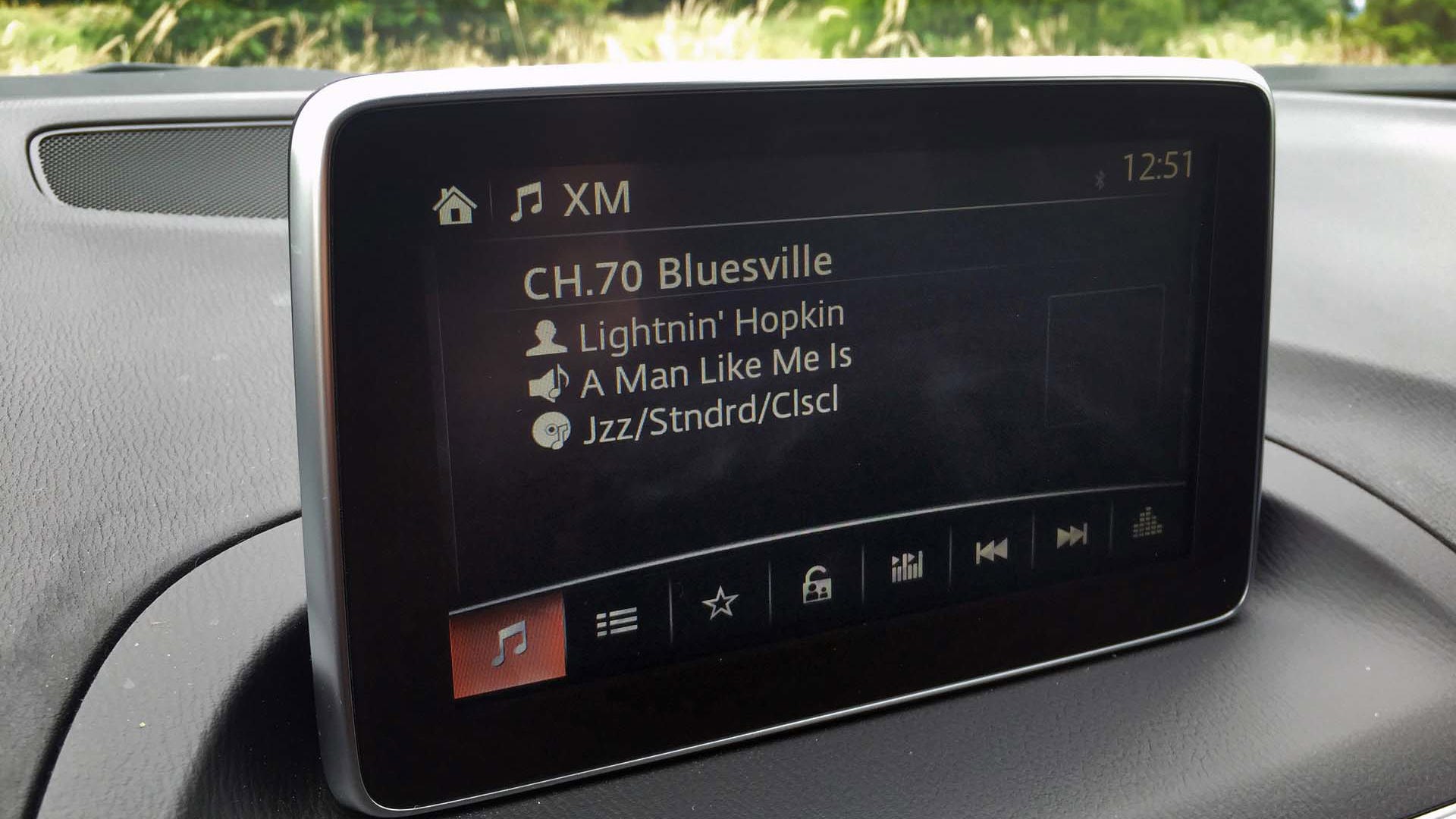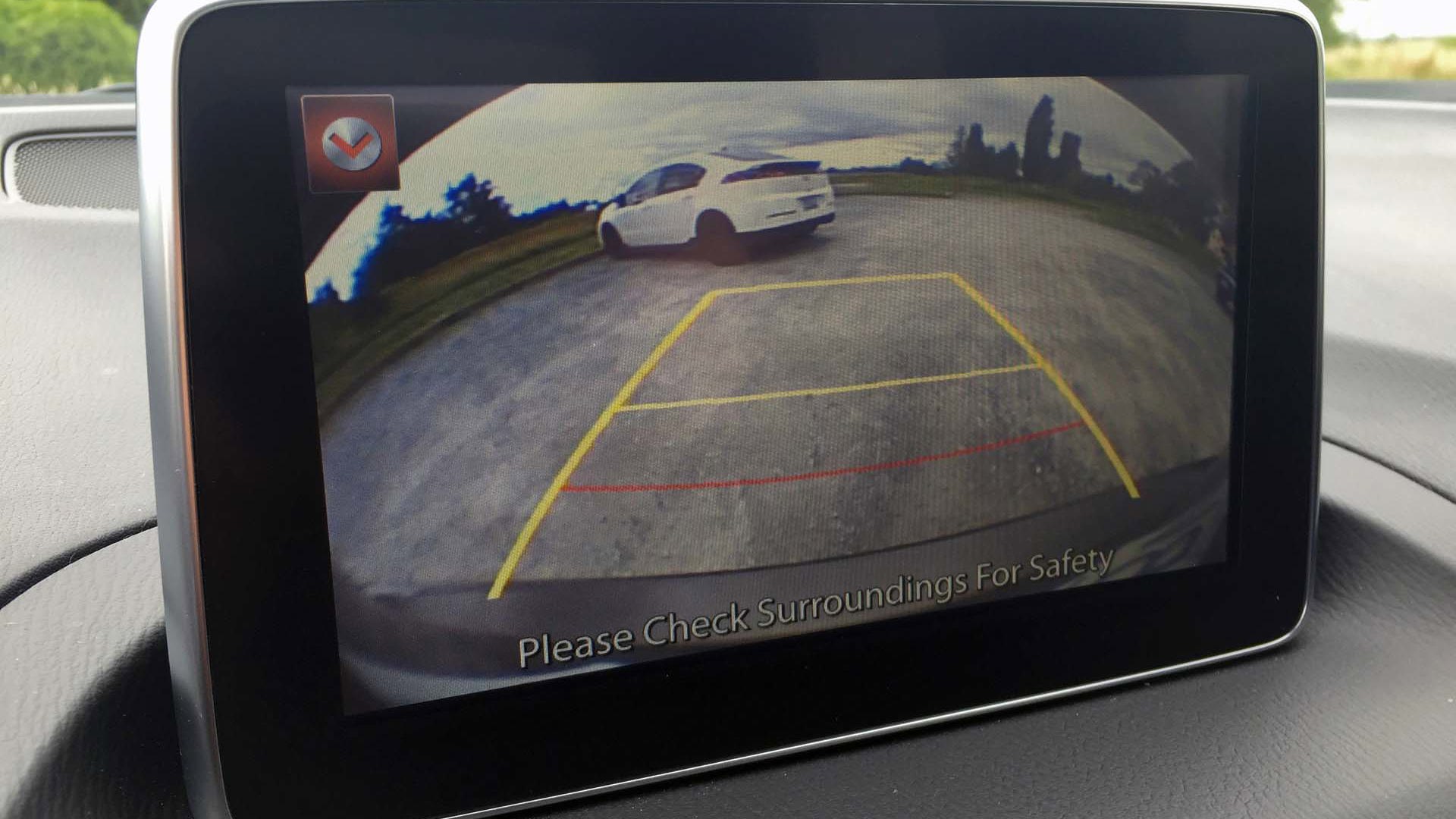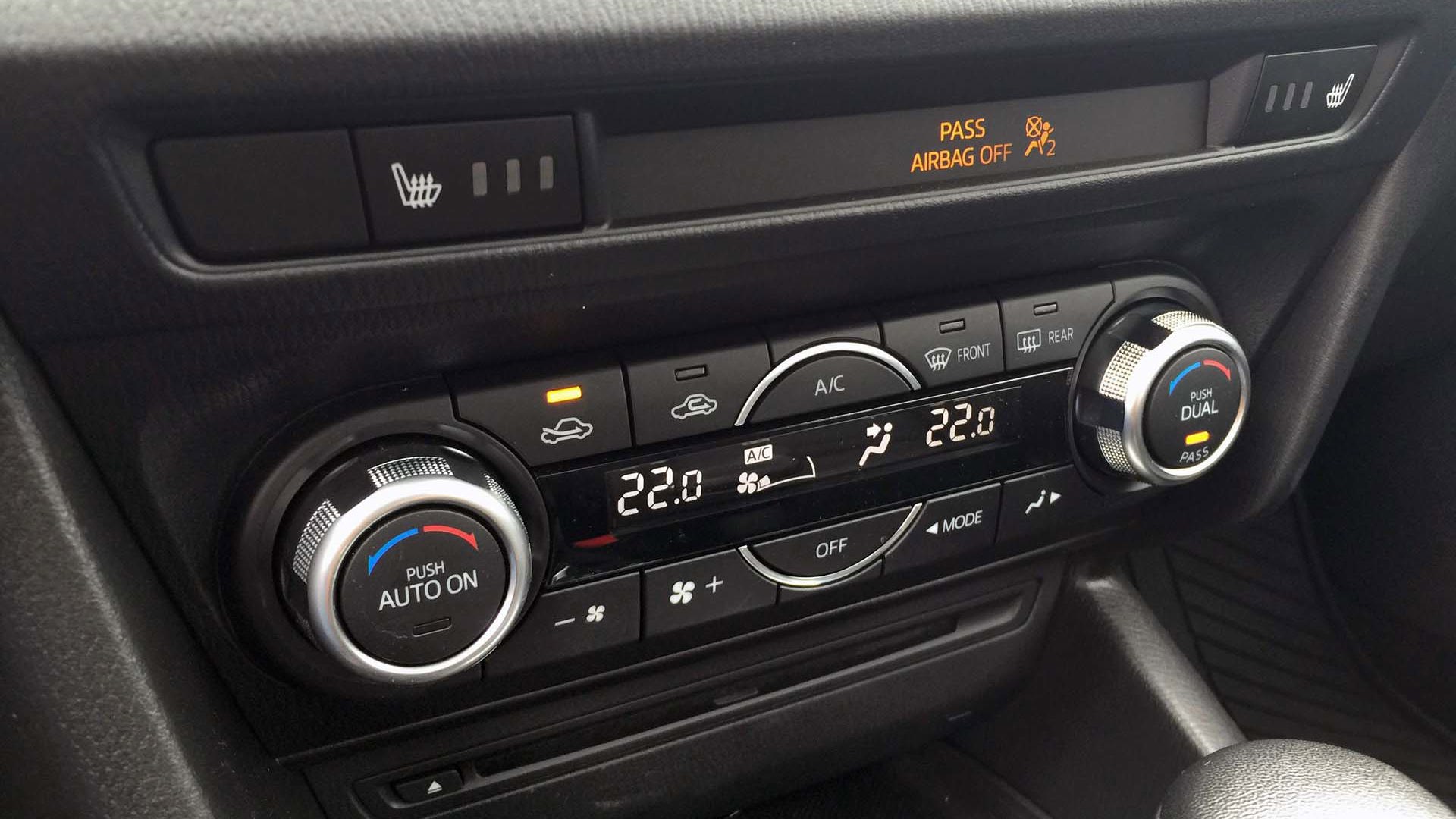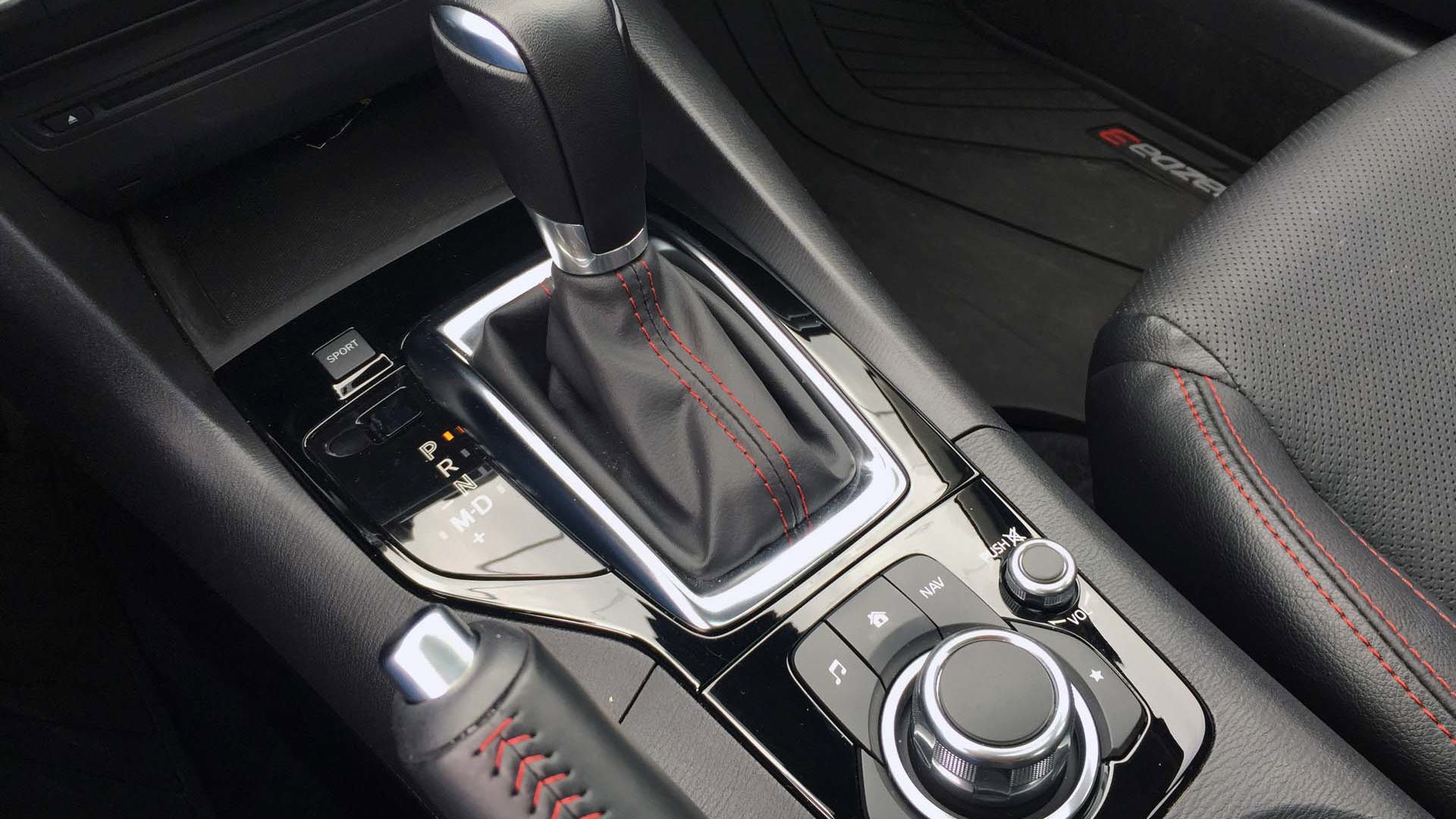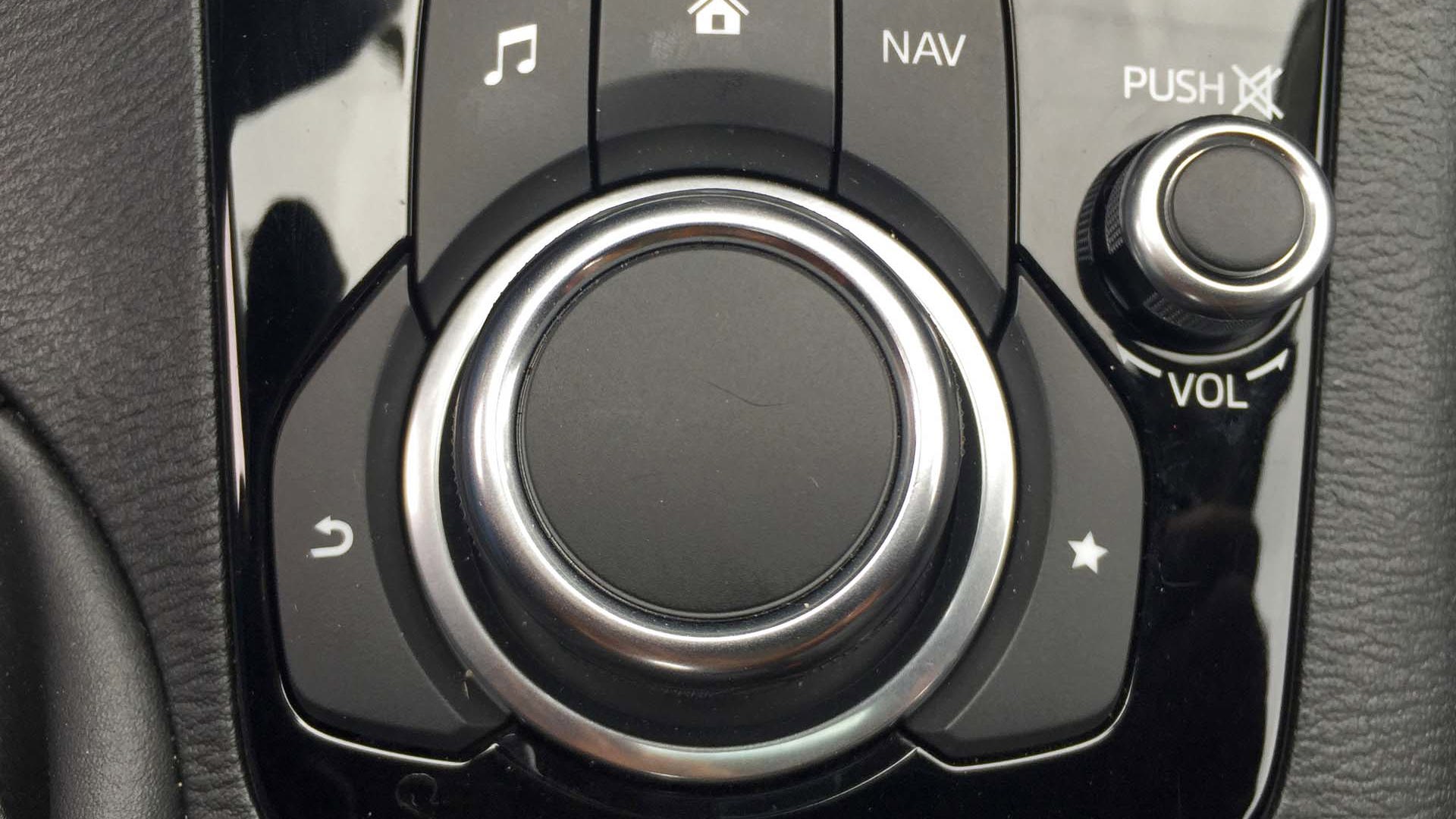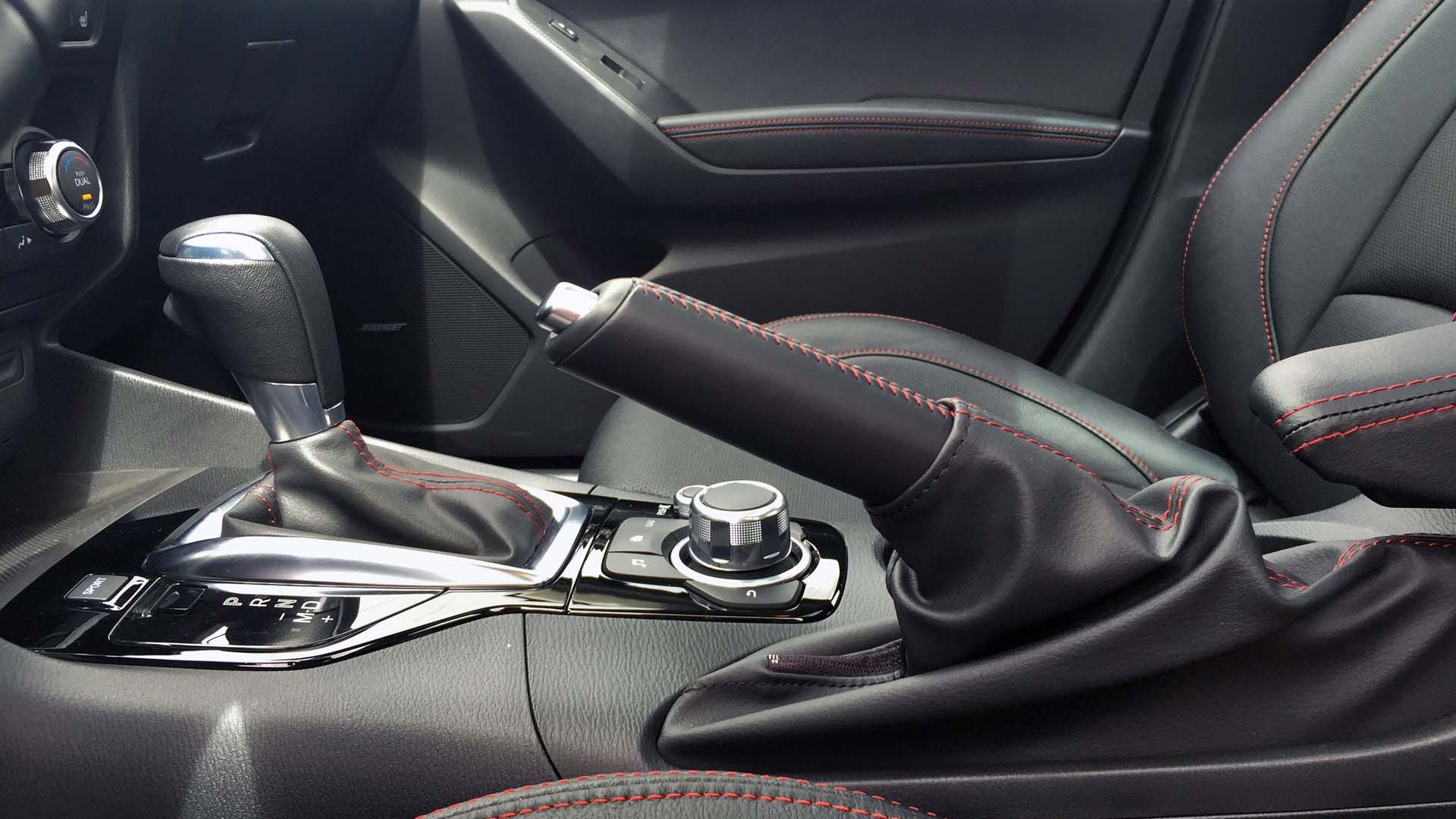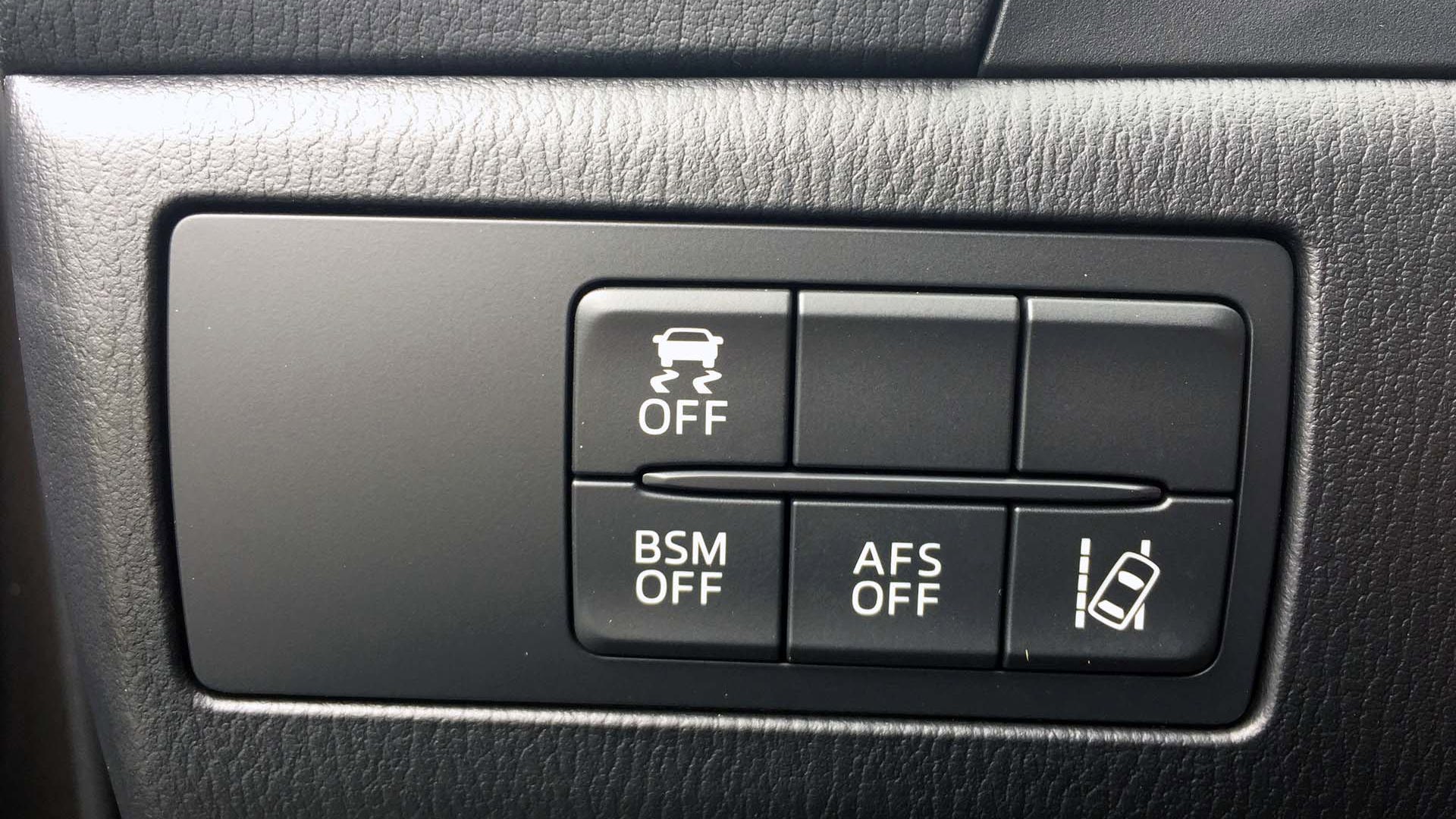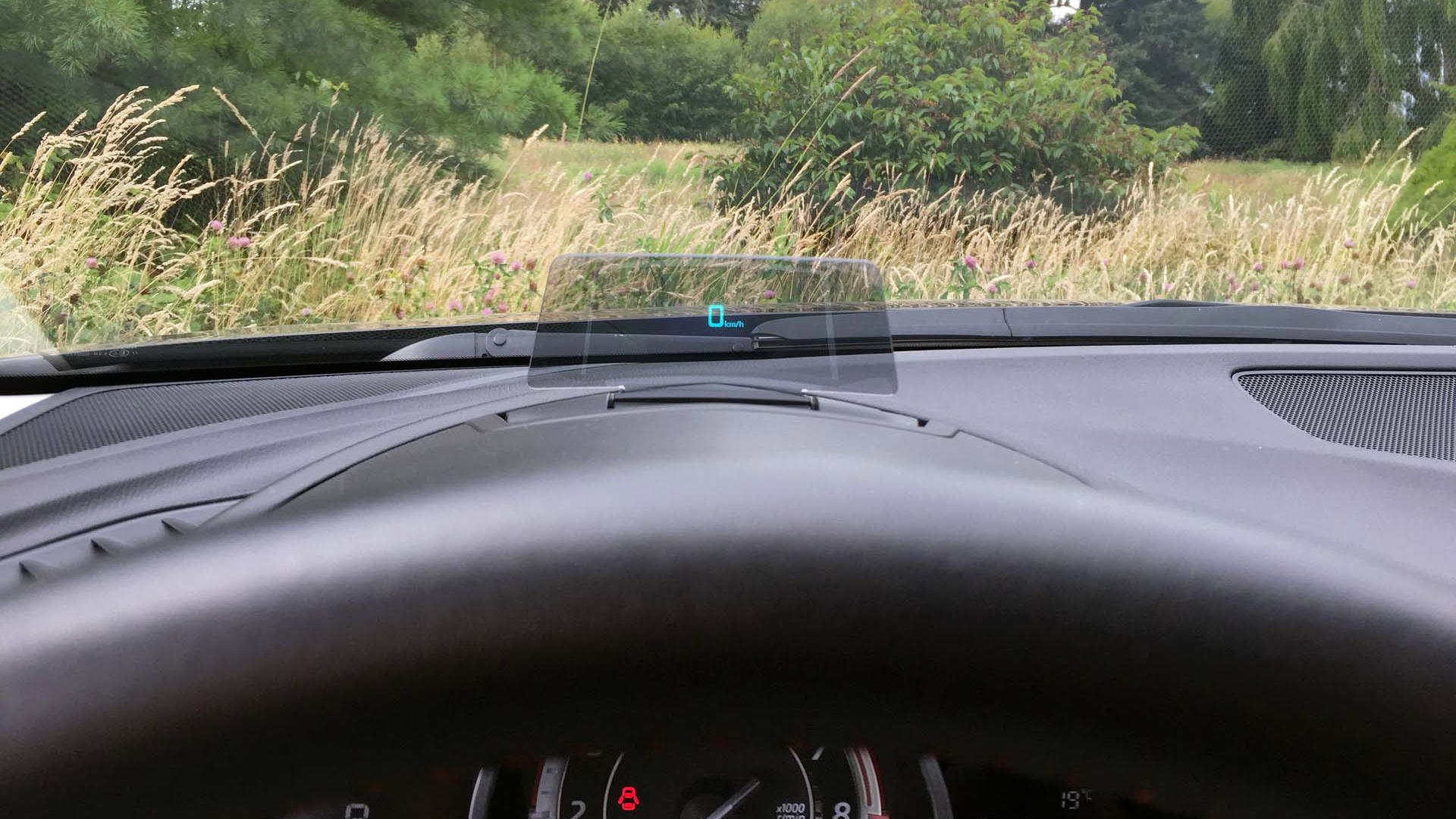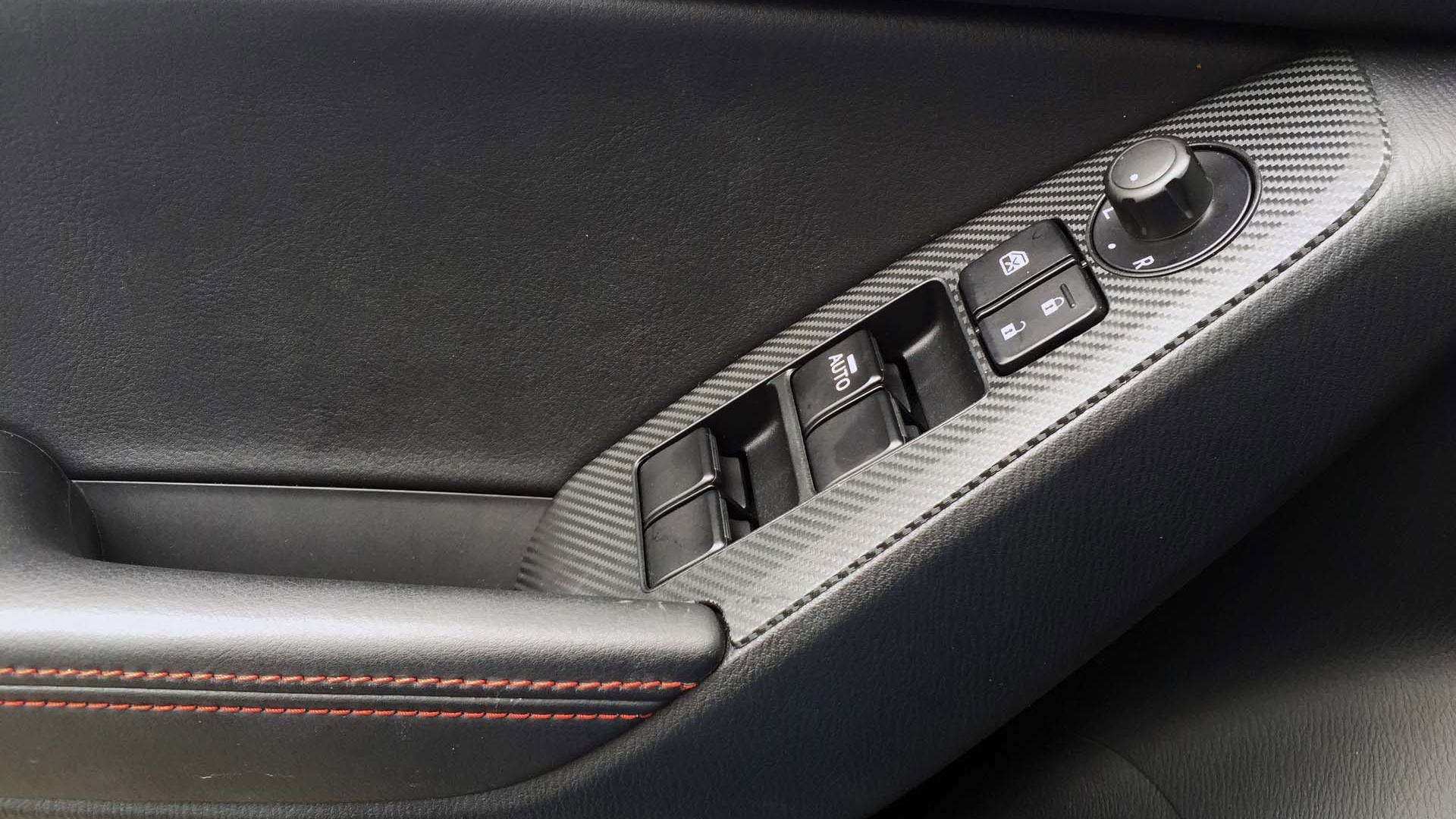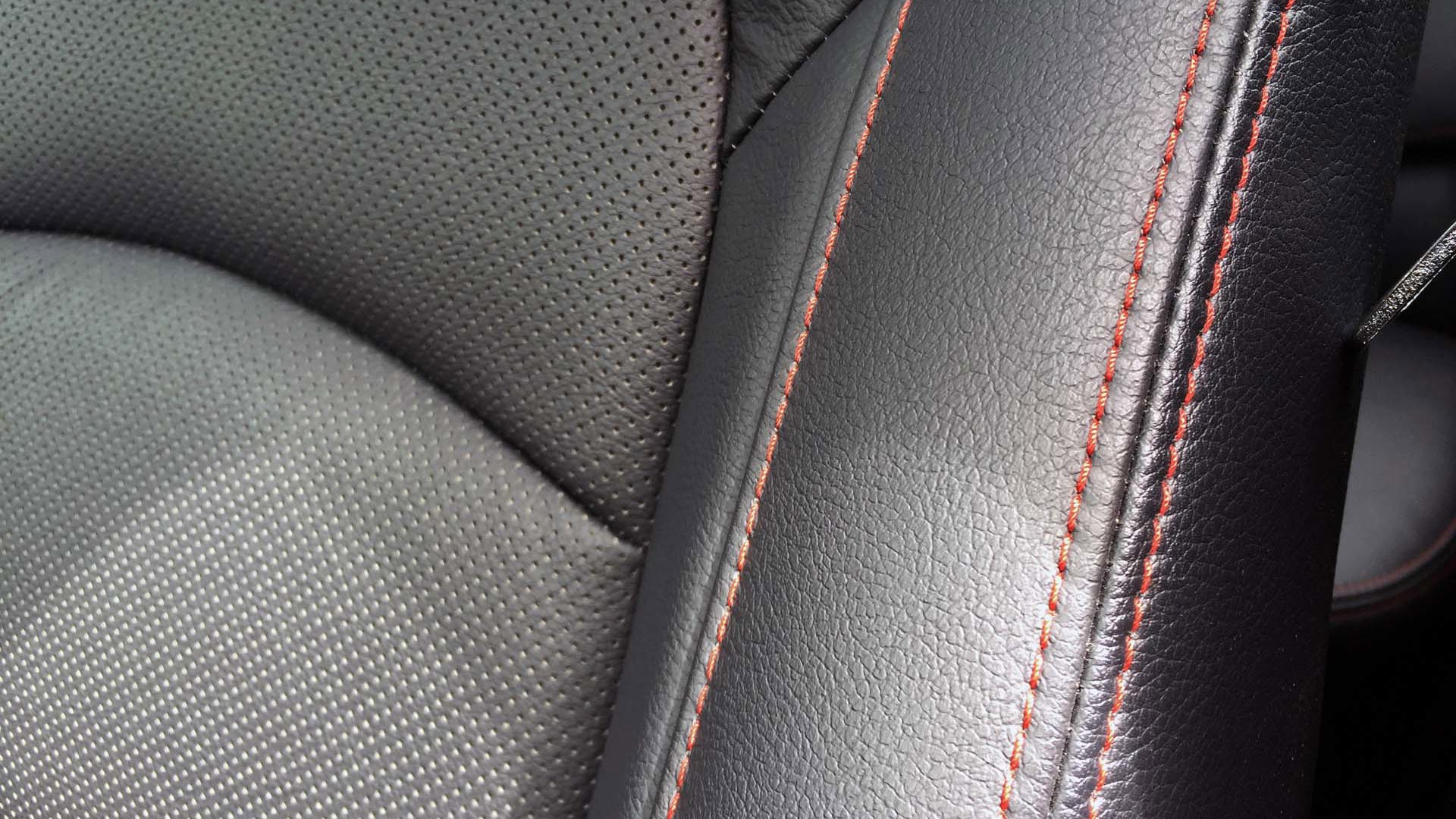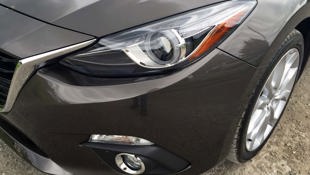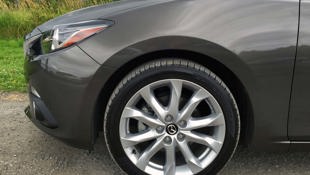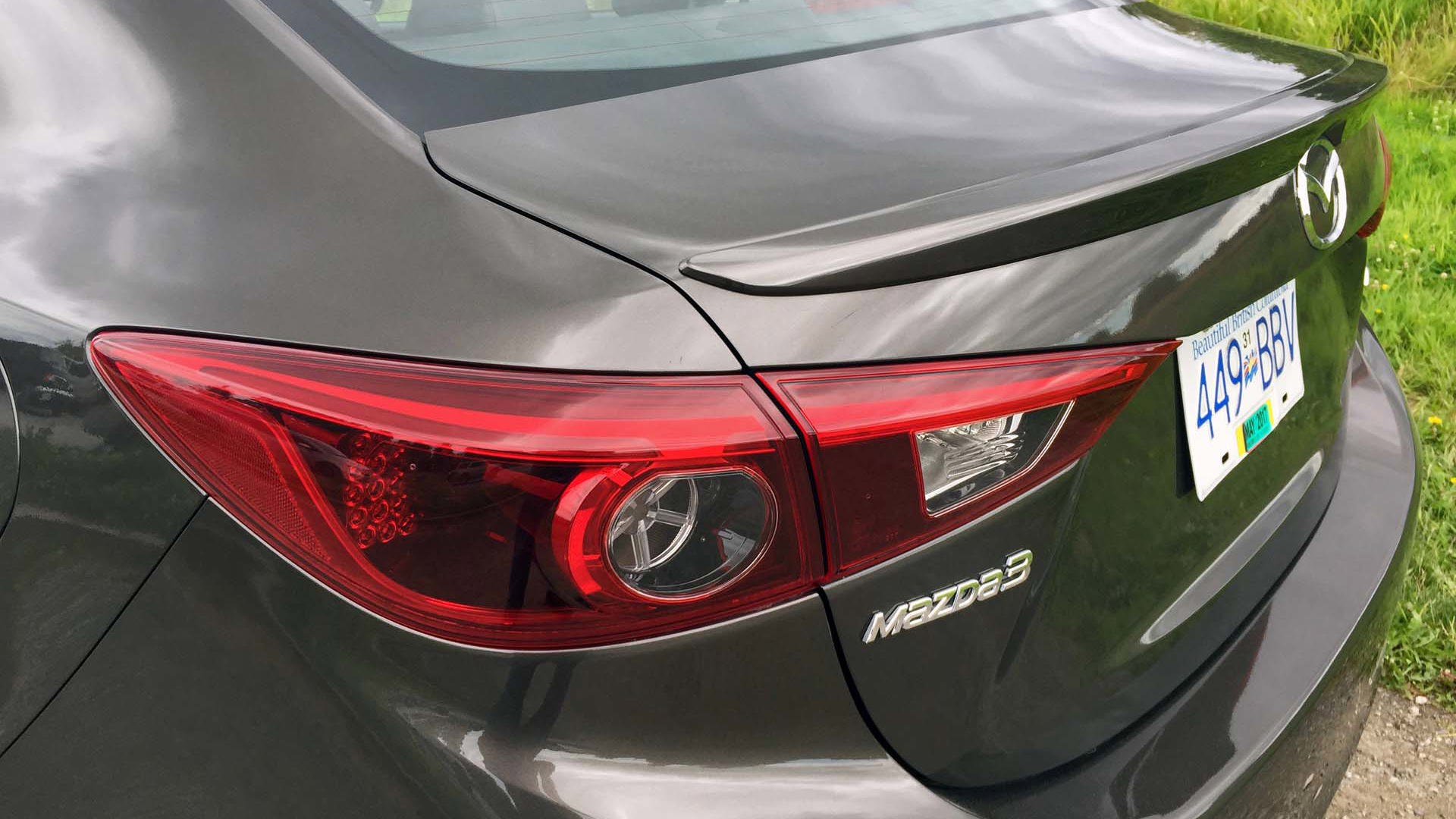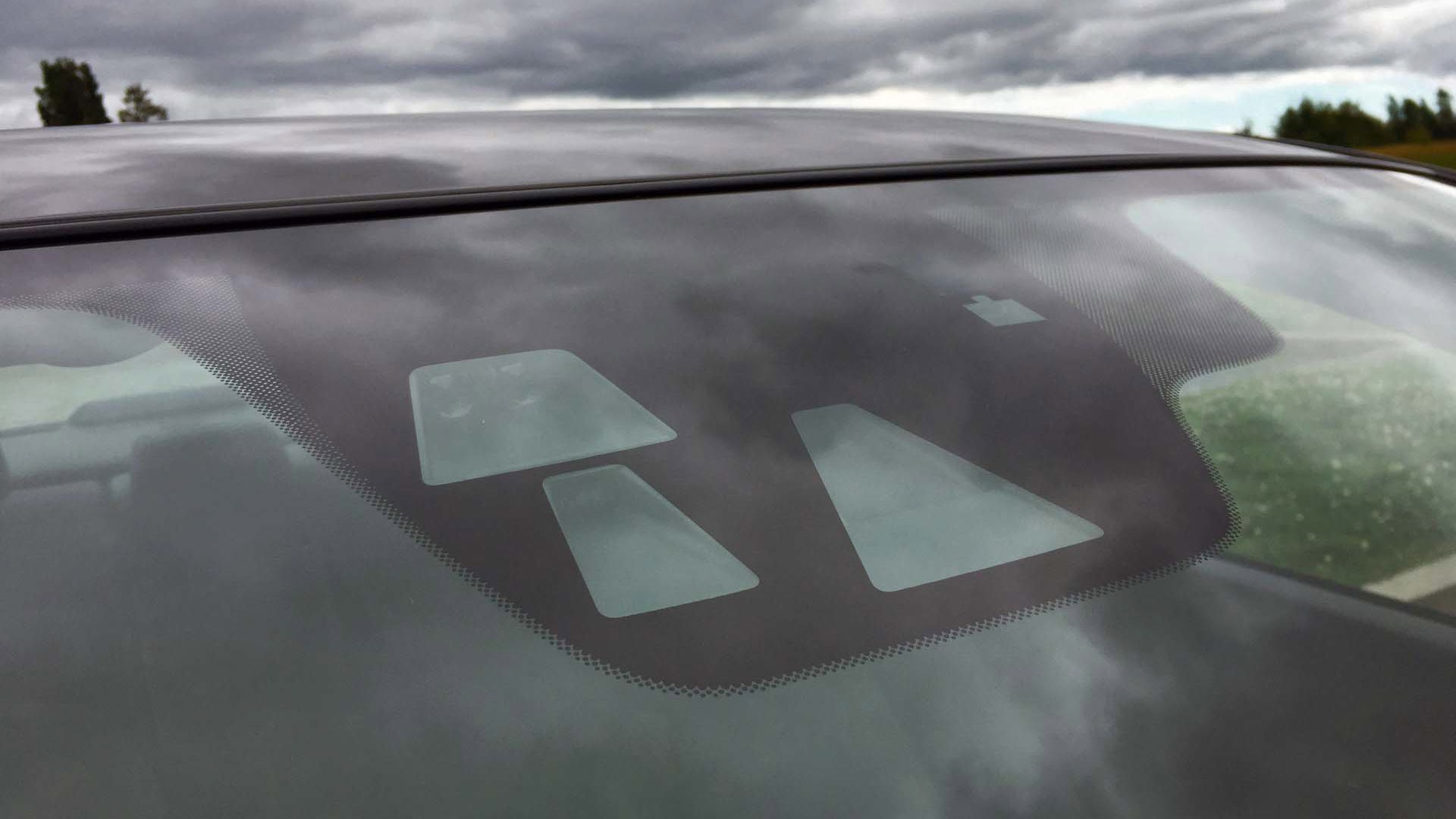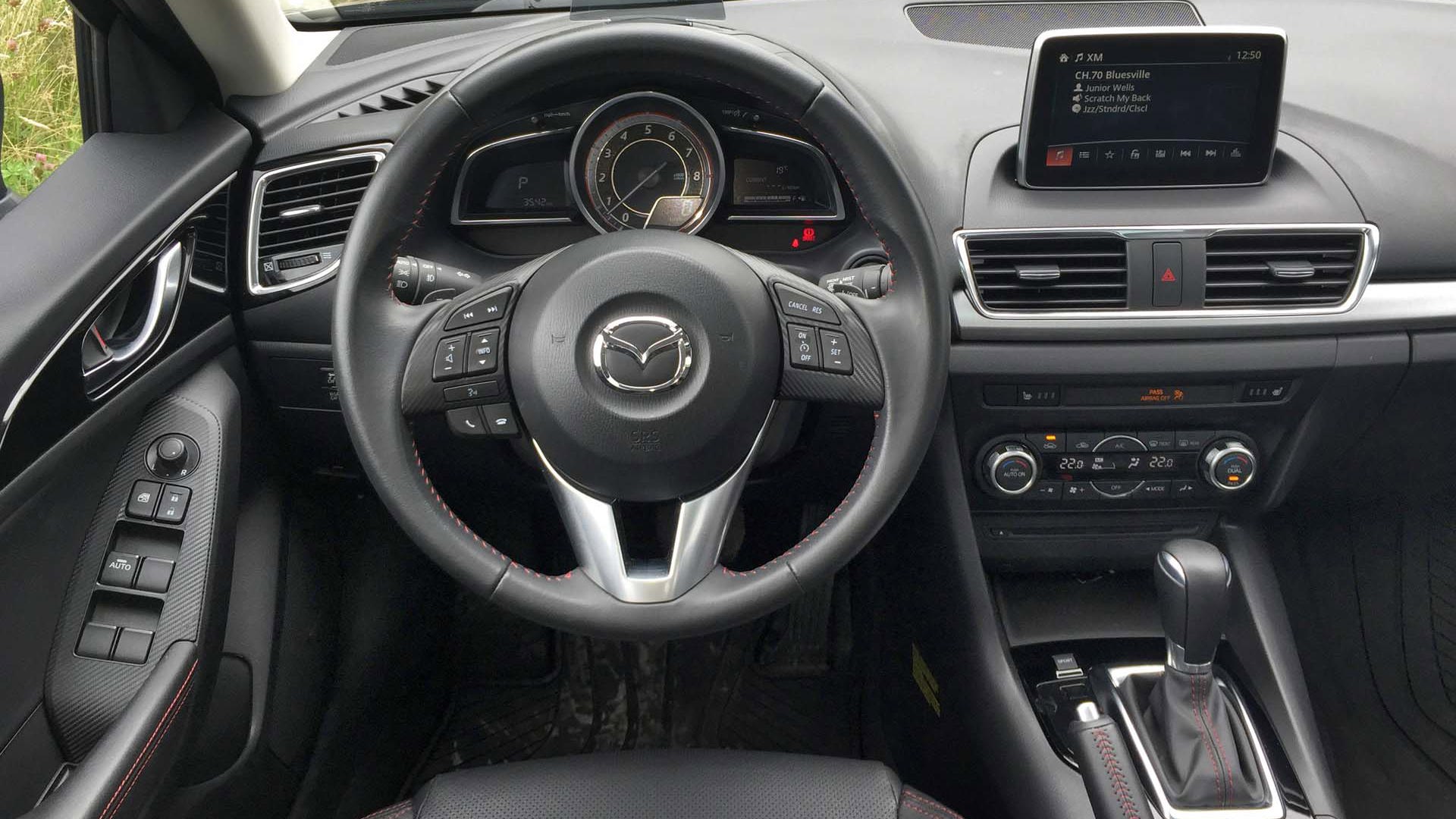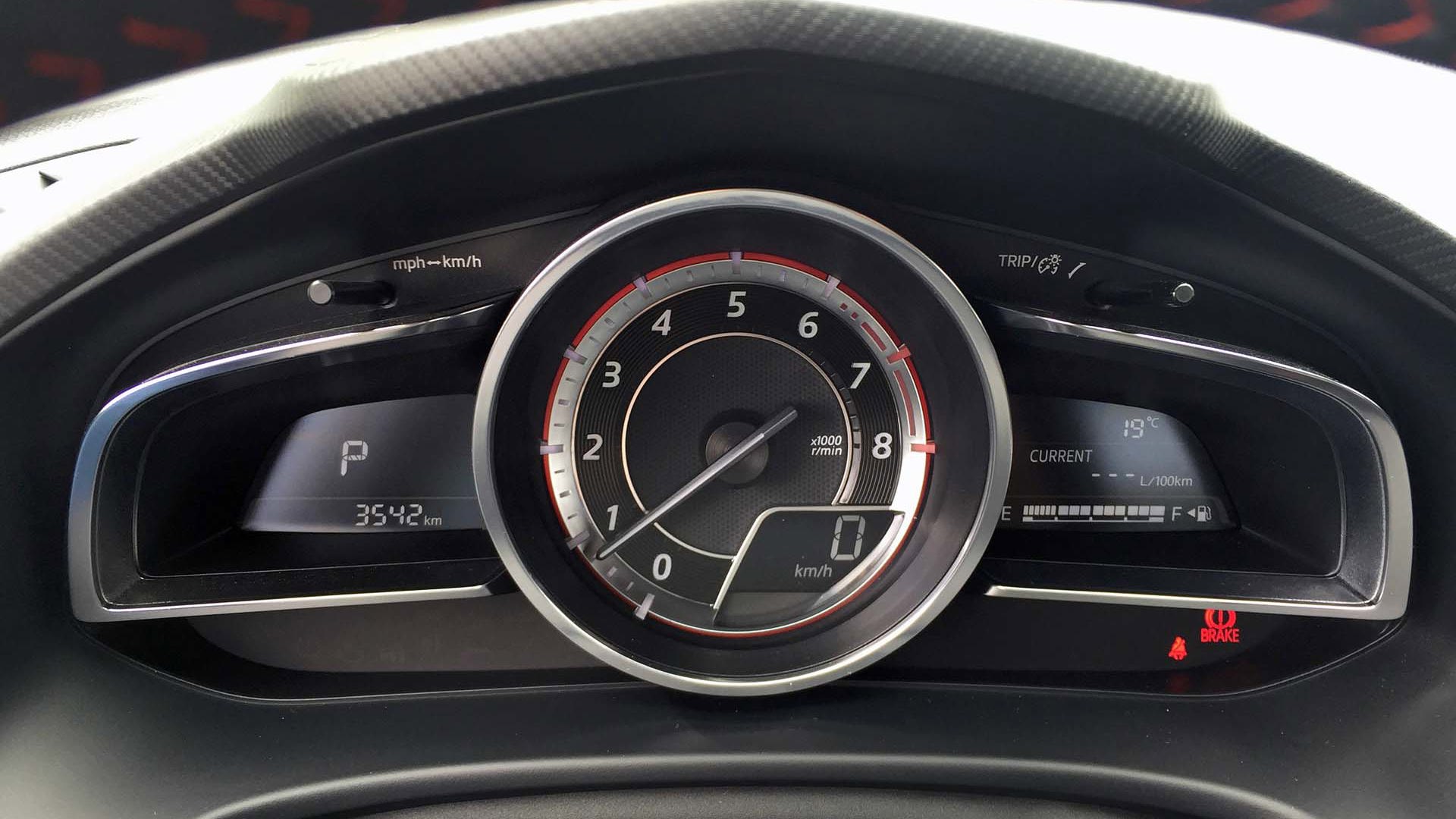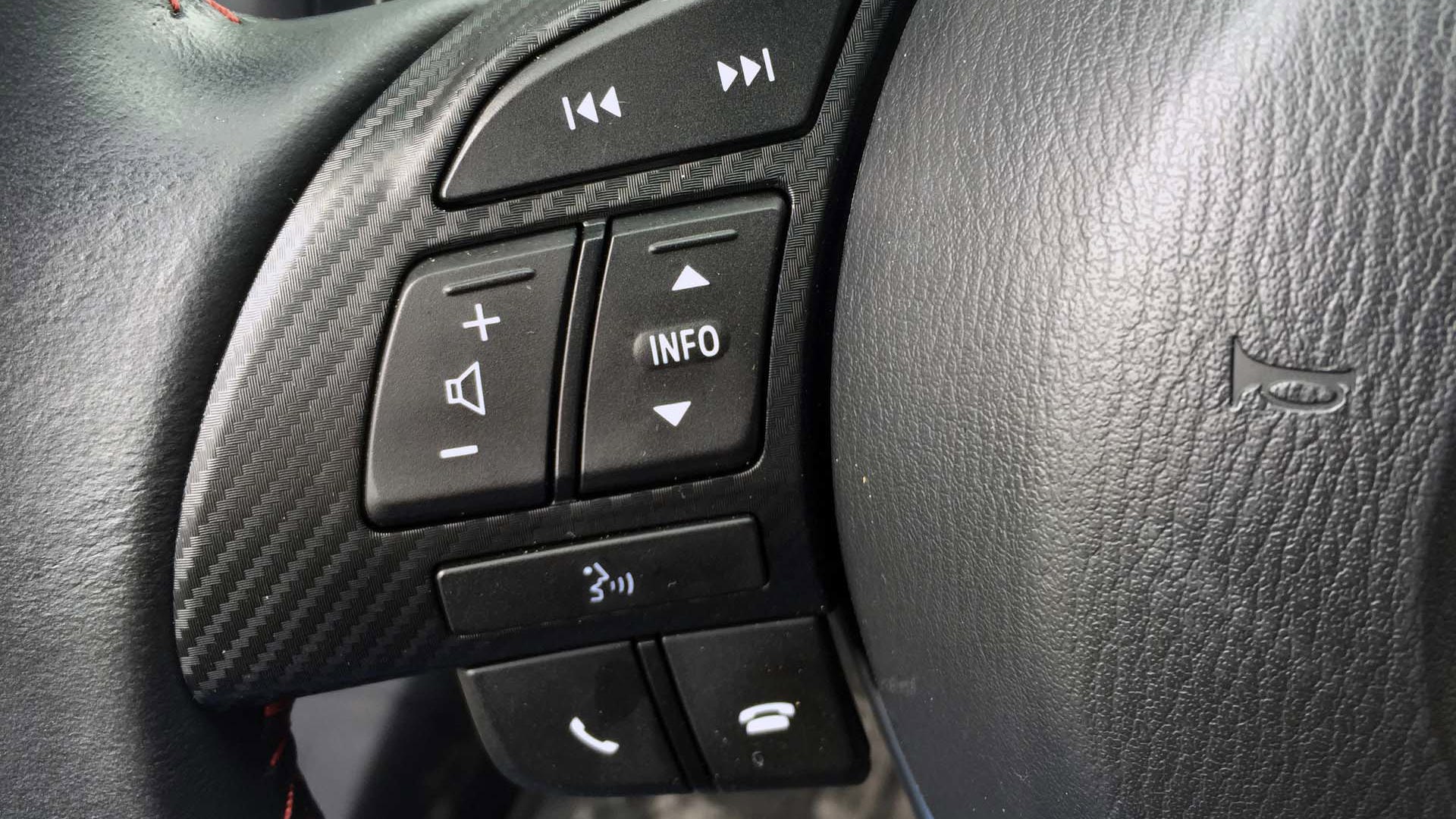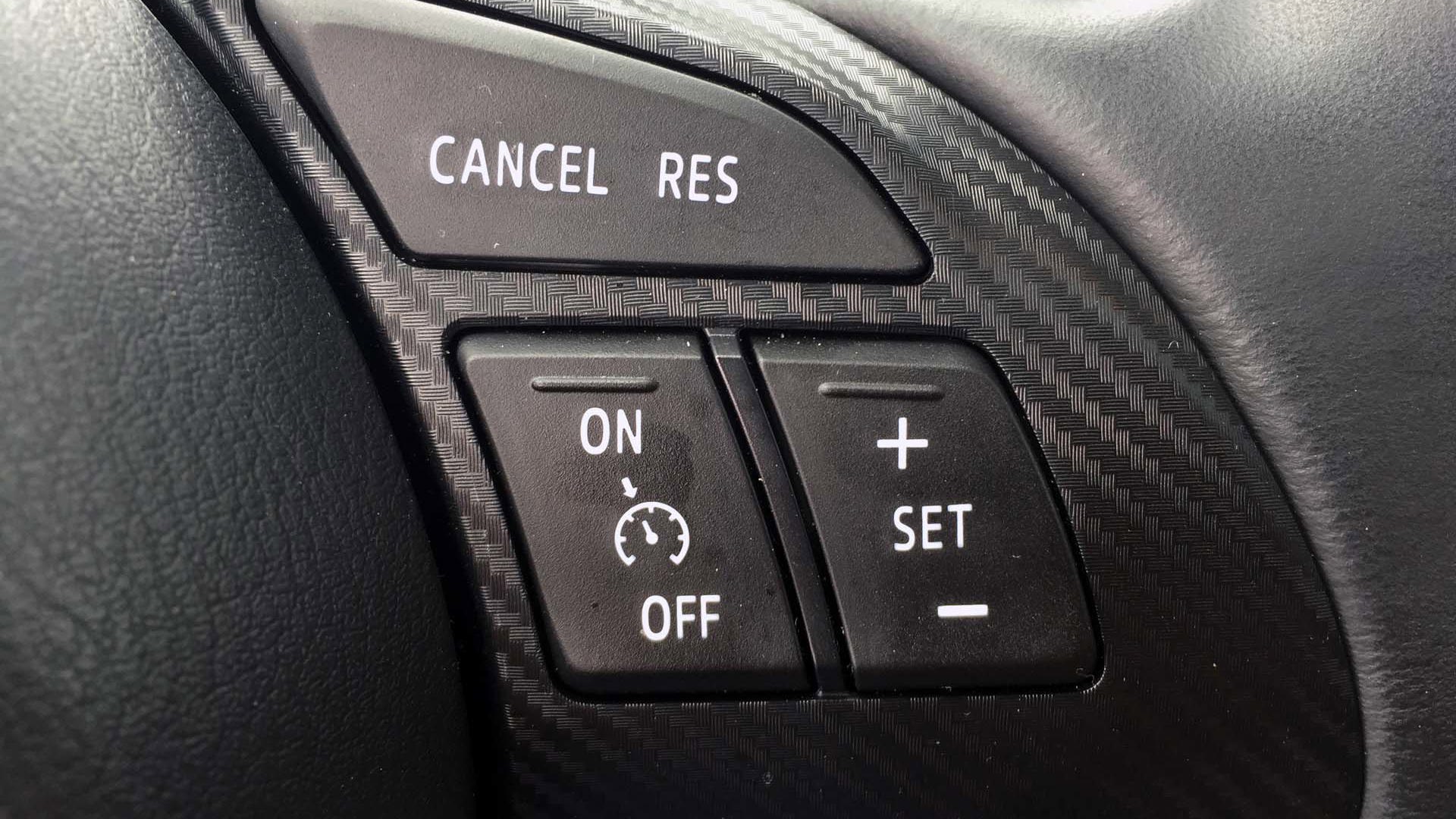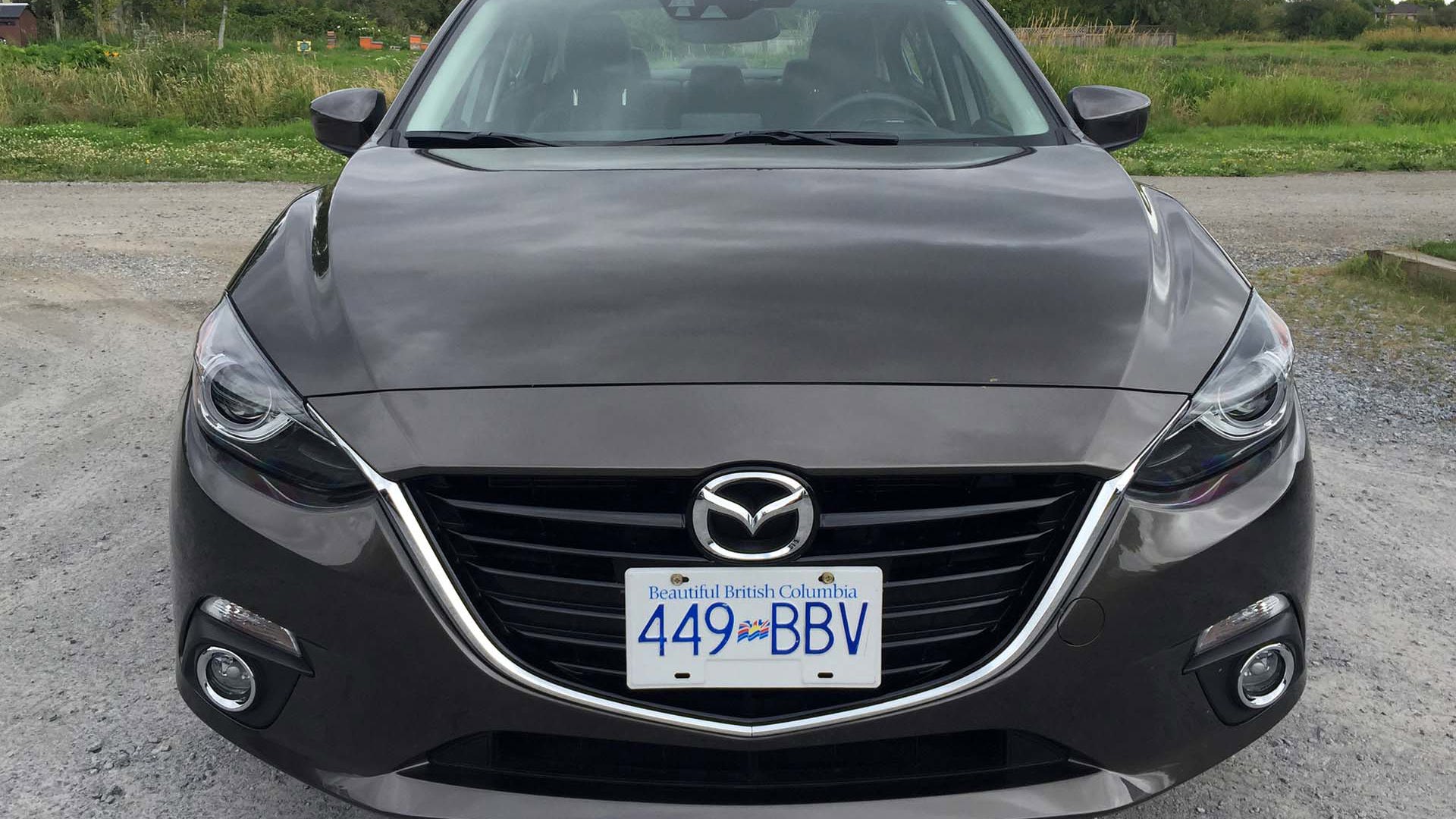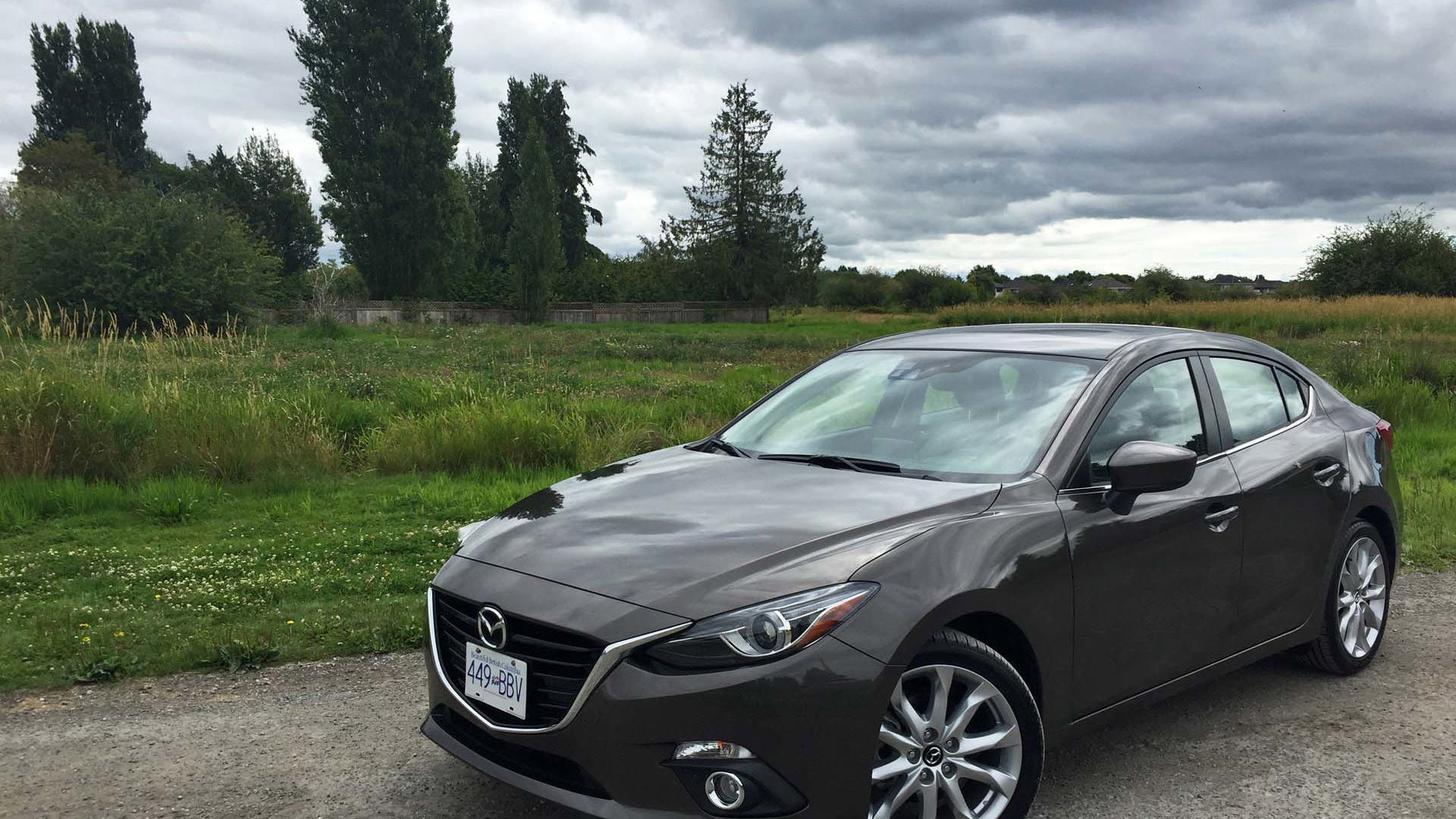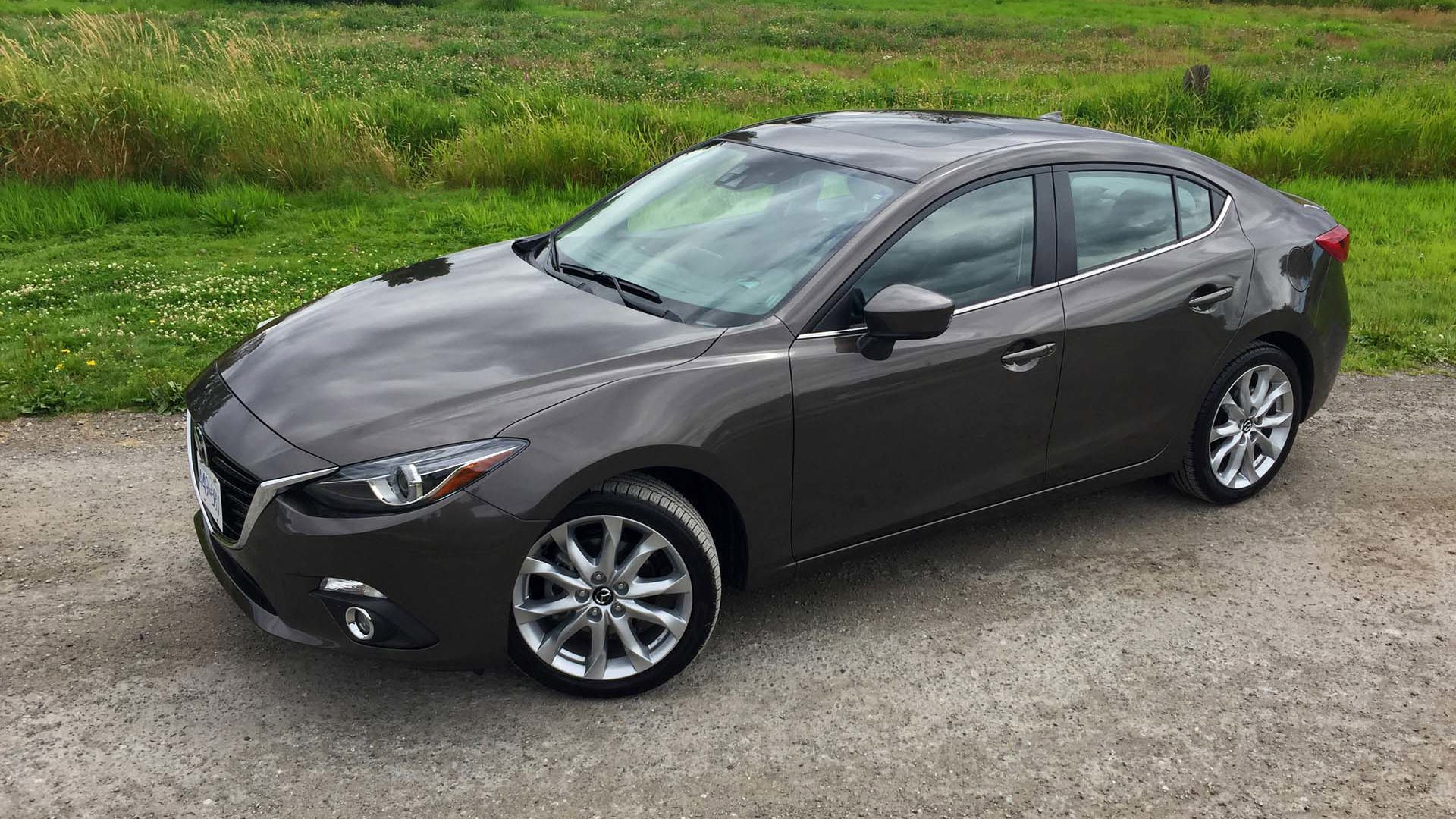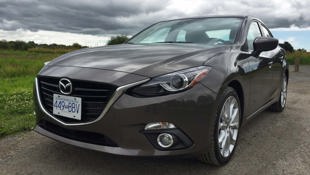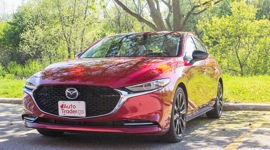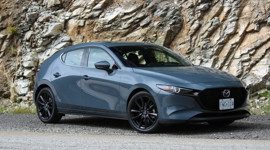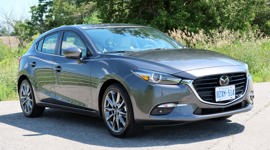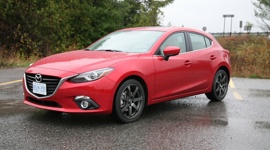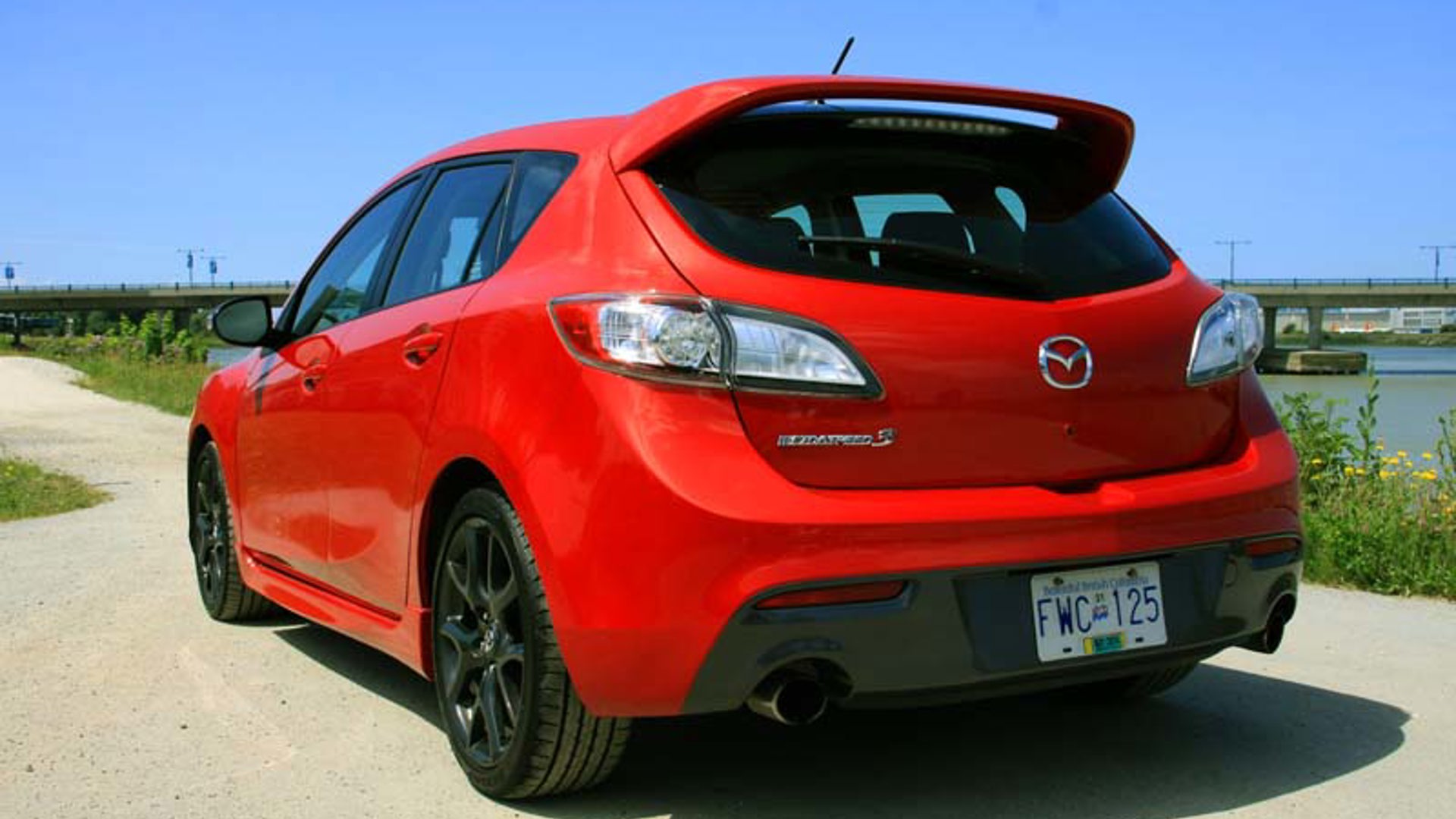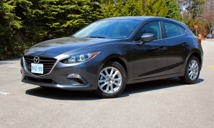 AutoTrader SCORE
AutoTrader SCORE
-
EXTERIOR STYLING9/10
-
INTERIOR7/10
-
PERFORMANCE8/10
-
FUEL ECONOMY6/10
-
COMFORT8/10
It’s been almost three years since the Mazda3 was redesigned and while it’s still one of autoTRADER.ca’s favourite compact cars, the Mazda3 (sedan and hatchback) is now competing with recently redesigned competitors like the Honda Civic sedan, Hyundai Elantra sedan, Chevrolet Cruze sedan, Scion iM hatchback (soon to be Toyota Corolla iM), Kia Forte sedan and Kia Forte5 hatchback, and VW Golf hatchback.
Don’t get me wrong: the Mazda3 sedan and Sport (hatchback) are still great cars.
Don’t get me wrong: the Mazda3 sedan and Sport (hatchback) are still great cars. In past test drives, we’ve complimented the Mazda3’s driving dynamics and the way it feels behind the wheel, its nicely designed interior and its easy-to-use infotainment system, its three- and five-year warranties with unlimited mileage and its reasonable price.
But there are some aspects of the 2016 Mazda3 that are starting to feel a bit dated. While we love the graphics and functionality of the Mazda3’s iPad-like screen on top of the dash and the rotary HMI controller on the console, the small LCD screens on either side of the central tachometer are starting to look cheap when compared to the bright, backlit, multi-coloured displays of the Elantra, Civic and others.
And while all but the base trim level comes with a dash-mounted 7-inch touchscreen, Bluetooth telephone and audio, auxiliary audio connection, two USB ports and 12-volt outlet, Mazda doesn’t offer Apple CarPlay nor Android Auto smartphone integration in any Mazda3 trim level.
Cabin noise is another issue. While competitors like the Elantra, VW Jetta and Chevrolet Cruze have done a good job of keeping out engine and road noise, the Mazda3’s cabin seems less insulated. The 2.5L four-cylinder engine in our Mazda3 GT test car emitted a rather coarse engine sound when idling and accelerating, particularly when cold. And while engine noise is subdued at highway speeds, wind and tire noise in the cabin is noticeable.
Naturally aspirated vs turbocharged
The GT’s naturally aspirated SkyActiv 2.5L four-cylinder engine (with optional i-ELOOP energy regeneration system in our test car) is still one of the most powerful engines in its class and is reasonably fuel-efficient, but frankly, its days are numbered. Many competitors’ top-trim models have switched to smaller, turbocharged engines of 2.0L displacement or less in order to get the best combination of performance and fuel economy.
Mazda doesn’t quote 0–100 km/h times for the Mazda3 GT, but when AJAC tested the current-generation 184 hp Mazda3 Sport (hatchback), its time was 8.1 seconds. For comparison, the new 174 hp Honda Civic 1.5L turbo/CVT has a 0–100 km/h time of 7.7 seconds. And as is typical of small turbocharged powerplants, the Civic turbo has better low-speed throttle response because it develops maximum torque below 2,000 rpm compared to the naturally aspirated Mazda3 GT which makes maximum torque at 3,250 rpm.
In terms of fuel economy, the 2016 Mazda3 GT’s NRCan fuel consumption rating of 8.4 / 6.1 / 7.4 (L/100 km city / highway / combined) is decent, but not as good as the Honda Civic EX-T (1.5L turbo/CVT) with 7.6 / 5.5 / 6.7 and the Chevrolet Cruze Premier (1.4L turbo/six-speed auto) with 7.8 / 5.9 / 6.9.
But based on our past test drives, the Mazda3 GT’s s real-world fuel economy is not always as good as NRCan numbers would indicate. I averaged over 9 L/100 km in a week of mostly urban/suburban driving, Editor Jacob Black averaged 9.1 L/100 km in a 2015 Mazda3 Sport GT with manual transmission, Paul Williams averaged 7.9 L/100 km in mostly highway driving in another 2015 Mazda3 Sport GT with manual transmission, Brendan McAleer averaged 7.3 L/100 km in a 2014 Mazda3 GT sedan with automatic transmission, and James Bergeron averaged 7.6 L/100 km in a 2014 Mazda3 Sport GT with automatic transmission.
A Turbo in the cards? Mazda CX-9’s Skyactiv Technology
Mazda’s SkyActiv technology – which employs weight-saving engine/transmission and suspension designs to help improve the Mazda3’s performance, efficiency and fuel economy – has been very successful, but I wouldn’t be surprised if the next-generation Mazda3 GT switches to a smaller turbocharged engine similar to the 2.5L SkyActiv turbo from the new CX-9.
I’d be remiss in not pointing out the advantages of the GT’s relatively large normally aspirated 2.5L engine: unlike turbocharged engines which have a slight throttle lag before the turbo spools up, the Mazda3 GT’s engine has more immediate throttle response off the line and an even torque curve while accelerating.
We also like the Mazda3’s optional six-speed automatic transmission which offers super smooth gear changes with the familiar ‘rise and fall’ engine sounds of a traditional automatic transmission (as opposed to the sustained engine droning that accompanies the operation of a continuously variable transmission). And it includes a Sport mode to improve performance by sharpening throttle response and changing shift timing. For those who like to do it themselves, there is a manual shift mode using the shift lever or the paddles.
And it’s nice to know that all trim levels of the Mazda3 are available with a traditional manual transmission.
As I indicated, the engine sounds a bit rough when first started but it gets quieter as it warms up. With the engine turning over just 1,800 rpm at a steady 100 km/h, engine noise is subdued on the freeway but tire noise can be loud especially over coarse-grade asphalt.
Pressing the Sport button on the console sharpens throttle response off the line, delays automatic transmission shifts, and keeps engine revs higher at any given speed to enhance acceleration. This can be handy if you’re in a hurry to get somewhere, but otherwise it just sounds noisier and uses more gas.
With a fully independent suspension, standard 215/45R18 all-season tires (Dunlop Super Sport 5000 on our test car) and responsive steering, the Mazda3 is a nimble handler with a ride that is comfortable on the highway but a bit stiff over pavement breaks and potholes. Apparently, the 2017 model will offer new ‘G-Vectoring control’, an electronic control system that improves steering and handling by reducing engine torque on initial steering input.
Our GT test car was equipped with the optional i-ELOOP regenerative braking system (part of the Technology Package) that stores energy in a capacitor during braking and decelerating for use in powering the car’s electrical systems, thereby reducing the amount of gasoline burned in the engine for those functions. A quick comparison of the Mazda3 GT (six-speed auto) with and without the i-ELOOP system reveals a marginal improvement in fuel economy: 8.2 city/5.9 hwy vs 8.4 city/6.1 hwy. There is no noticeable difference in performance that I could detect.
Our car was also equipped with the optional Technology Package ($2,500) that includes Smart City Brake Support (SCBS), Blind Spot Monitoring (BSM), Rear Cross-Traffic Alert (RCTA), Lane Departure Warning System (LDWS), High Beam Control (HBC), Adaptive Front Lighting System (AFS), SiriusXM satellite radio, active air shutter, i-ELOOP regenerative braking system, auto-dimming rearview mirror, and HomeLink wireless garage opener.
Of these features, the Blind Spot Monitoring and Rear Cross-Traffic Alert are the most useful in everyday driving as they warn the driver of potential collisions from unseen vehicles, thereby saving the hassle of an insurance claim, the cost of repair and the possibility of injury. This is particularly important in the Mazda3 sedan as its high rear deck and ascending rear windowsills limit rear visibility when changing lanes. A godsend is the rearview camera, which gives a wide-angle view of the area behind the car when in reverse gear, with guidelines to help when parking.
Smart City Brake Support uses a windshield-mounted infrared laser beam to detect potential collisions at low speeds (4–32 km/h) and automatically stop the car if the driver does not brake or steer in time. But it has its limitations: it may not work in bad weather, on curvy roads or if obstructed and it’s not designed to detect pedestrians, like some other systems are.
At night, the Mazda3 GT’s bi-xenon low beams offer a wide swath of forward illumination with a sharp upper cutoff and optional swiveling headlights that turn with the steering wheel (Adaptive Front Lighting System). The inside headlight turns in the direction of the steering while the other remains pointed straight ahead. It’s very effective and lighting up the dark patches on the inside of a corner.
Interior has its pluses and minuses
Despite the Mazda3 sedan’s low, sleek appearance, the cabin is roomy enough for four adults. Front and rear headroom is generous, and ‘sitting behind myself’, I had about 25 mm of knee room and generous foot room under the front seat. The side windowsills are high though, making the rear passengers feel like they’re sitting in a hole. A centre rear driveline hump (sans driveline) and a protruding centre console restrict legroom for a middle rear passenger and the middle seat cushion is harder. Absent a middle rear passenger, a rear armrest with two cupholders folds down in the centre. I was disappointed to see there are no rear air vents in the console or a 12-volt phone charger.
The interior in our GT test car was mostly black with some aluminum trim across the dash and around the instruments and touchscreen, silver trim on the steering wheel and around the air vents, and patterned black trim on the steering wheel. With the optional Luxury Package ($2,100) our test car was equipped with leather seats (heated) with red stitching, a six-way power driver’s seat with manual lumbar adjuster, Bose premium audio system with nine speakers, and dual-zone automatic climate control. The red stitching is also found on the shift lever boot, handbrake handle and leather-wrapped steering wheel. Overall, the interior has a modern, tasteful appearance (except for those aforementioned digital displays in the instrument cluster).
Another thing: Mazda may be trying to imitate Porsche by positioning a round tachometer with an inset digital speedometer in the middle of the instrument cluster but why exclude a round speedometer? As well, the GT’s Luxury Package should include a height adjuster and lumbar adjuster for the front passenger seat.
I found the driver’s seat to be comfortable with good lateral support but I needed to adjust the lumbar lever to its maximum position to provide proper lower back support. Combined with a manual tilt/telescopic steering wheel, it’s easy to find a good driving position in the Mazda3 and controls are within easy reach.
The large silver dial on the console between the seats is perfectly positioned for the right hand. It can be pressed, pushed, turned and tilted to navigate around the menus on the screen and there are also buttons surrounding the dial for accessing major menus such as the Home screen, Music, Navigation, as well as Back. On-screen icons allow access to Bluetooth telephone, Entertainment, Navigation, Apps and Settings. The driver can also use voice commands to change the radio station, make a telephone call, or input a destination into the navigation system. A handy ‘Help’ voice tutorial explains how to use the system and which commands to use. The screen can also be used as a touchscreen, but only when the vehicle is stopped.
Steering wheel controls can be used to adjust radio volume, use voice activation, and operate the trip computer, which includes useful info such as average fuel economy, instant fuel economy, average speed and range. In the GT there’s also a head-up display for the speedometer displayed in a pop-up plastic screen on top of the dashboard. However, if your seat is positioned too high or too low, it can be difficult to see at first. The HUD height is adjustable through the settings menu.
Interior storage space is limited in the Mazda3. There’s an open tray with a non-slip surface at the bottom of the centre console for your phone but no charging outlet. However, under the centre padded armrest is a small bin with a 12-volt outlet, two USB ports, auxiliary port, and SD card slot. The glovebox is a decent size but the door pockets are small.
The Mazda3 sedan’s 350 L trunk, though sufficiently roomy for most needs, is 14 percent smaller than the Elantra’s trunk and 18 percent smaller than the Civic’s. The trunk opening is wide and the floor and walls are fully lined and the 60/40 split folding rear seatbacks can be released from inside the trunk to add storage versatility. Under the floor is a temporary spare tire.
Pricing and equipment
2016 Mazda3 sedans are offered in four trim levels: G, GX, GS and GT with MSRPs ranging from $15,550 to $25,350. GX, GS sedans all include additional standard features for 2016 while the GT’s formerly standard Bose nine-speaker stereo and dual-zone automatic climate control are now extra cost options.
New for 2016 is the entry-level G trim ($15,550), basically a price-leader with reduced content to lure customers into the showroom. It comes with a standard 155 hp 2.0L four-cylinder engine and six-speed manual transmission, but is not available with an automatic transmission, air conditioning, tachometer or wireless Bluetooth phone and audio – and it doesn’t have Mazda’s signature HMI controller and touchscreen. It does include keyless entry, push-button ignition, power windows and mirrors, height-adjustable driver’s seat and a single folding rear seatback.
The Mazda3 GX trim ($18,350) is probably the best value: to the G’s standard equipment it adds air conditioning, 7-inch touchscreen with HMI controller, Bluetooth wireless telephone and audio, rearview camera, tachometer, trip computer, alarm, and cruise control. And it’s available with an optional six-speed automatic transmission with Sport mode ($1,300).
The extra $1,600 it costs to get into the GS trim ($19,850) is probably worth it for many people because it adds 16-inch alloy wheels, split folding rear seatbacks, premium cloth seats with heated front seats, heated mirrors, automatic headlights, rain-sensing wipers, leather-wrapped steering wheel, shift knob and parking brake, and brighter interior trim.
At the top of the ladder is the Mazda3 GT ($25,350). It’s powered by the bigger and more powerful 184 hp 2.5L four-cylinder engine mated to a standard six-speed automatic tranny with manual shift capability, paddle shifters, and Sport Mode. It also includes larger 18-inch all-season tires mounted on 18-inch alloy wheels, bi-xenon headlights, LED daytime running lights and tail lights, front fog lights, rear spoiler, Active Driving Display, voice-activated navigation system, CD player, and fancier interior trim. The GT is also the only Mazda3 trim available with an optional Technology package ($2,500) of active safety features, such as blind spot monitoring and lane departure warning; and an optional Luxury Package ($2,100) with leather seats, Bose stereo, dual-zone automatic climate control and driver’s lumbar adjuster.
Our GT test car had both those option packages resulting in an as-tested price of $29,950 plus $1,695 freight charge and $100 A/C tax for a total of $31,745.
The Mazda3 GT sedan and hatchback (Sport) are built in Hofu, Japan. The Mazda 3 GX and GS are built in Mexico.
| Warranty: 3 years/unlimited distance; 5 years/unlimited distance powertrain; 7 years/unlimited distance corrosion perforation; 3 years/unlimited distance roadside assistance Competitors: |
| Model Tested | 2016 Mazda3 GT |
|---|---|
| Base Price | $25,350 |
| A/C Tax | $100 |
| Destination Fee | $1,695 |
| Price as Tested | $31,745 |
|
Optional Equipment
$4,600 (Luxury Package $2,100; Technology Package $2,500)
|
|
